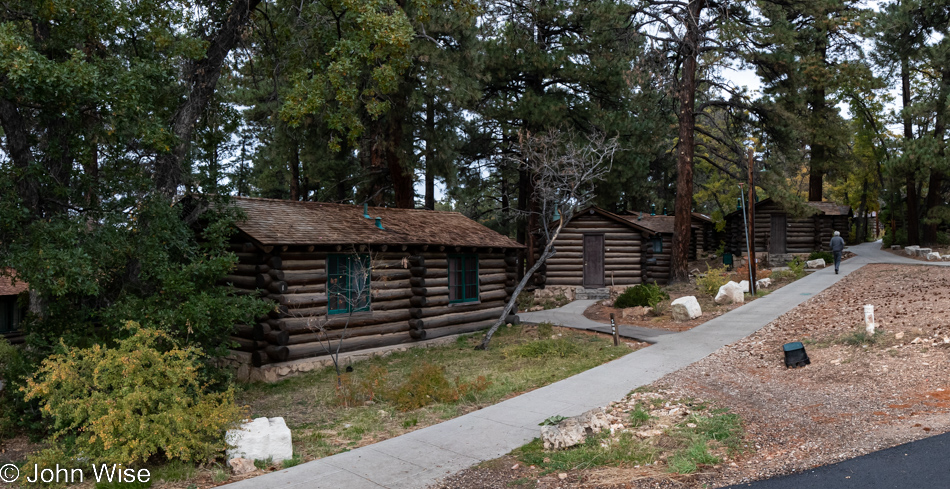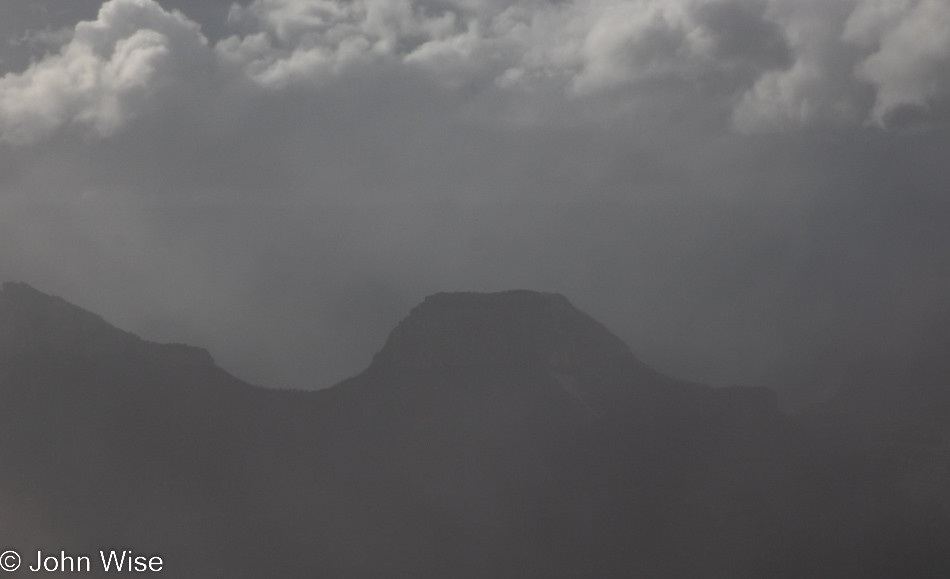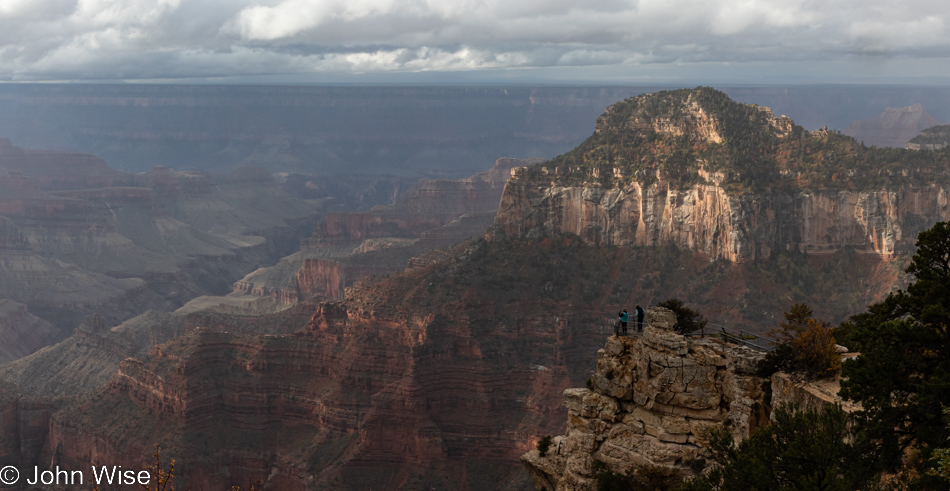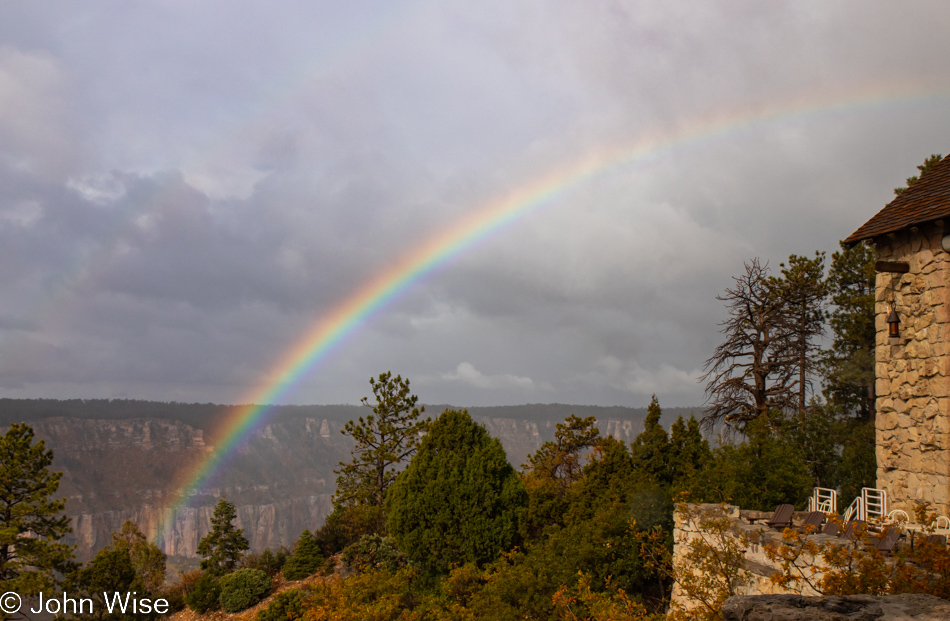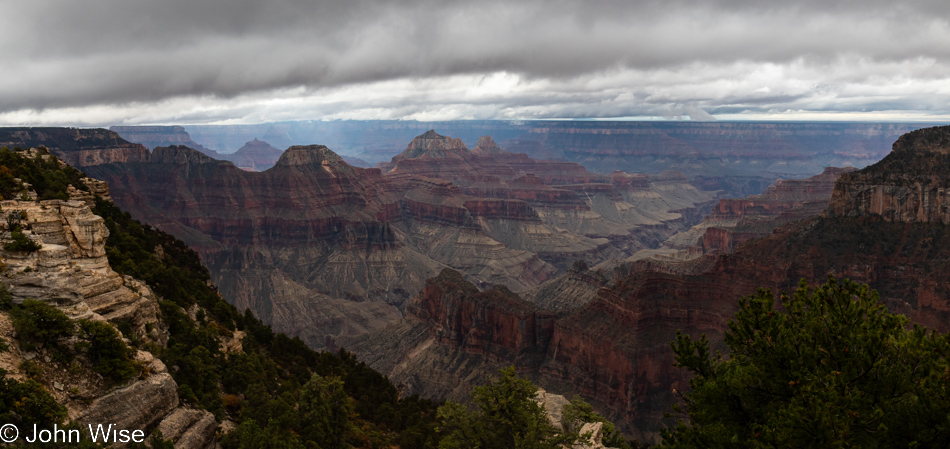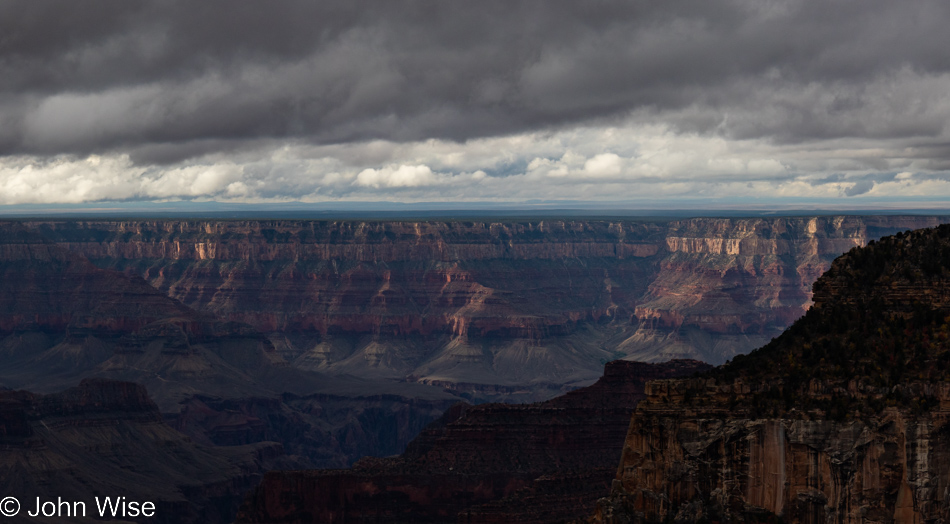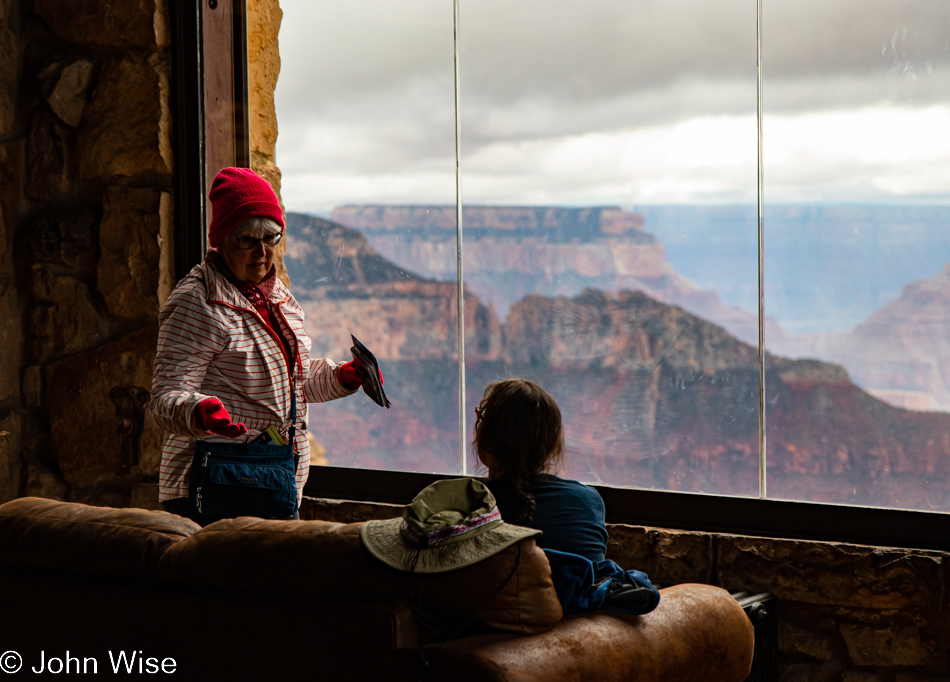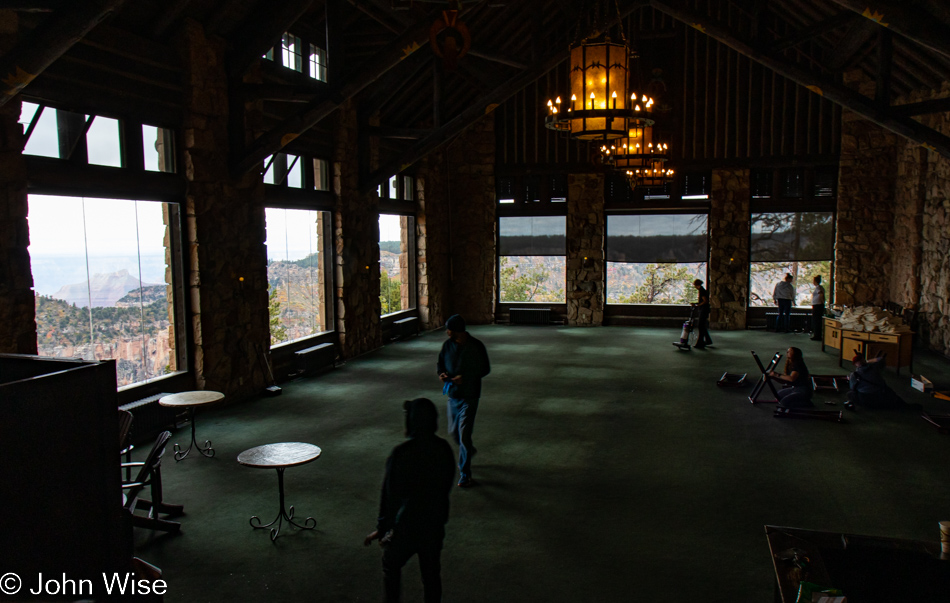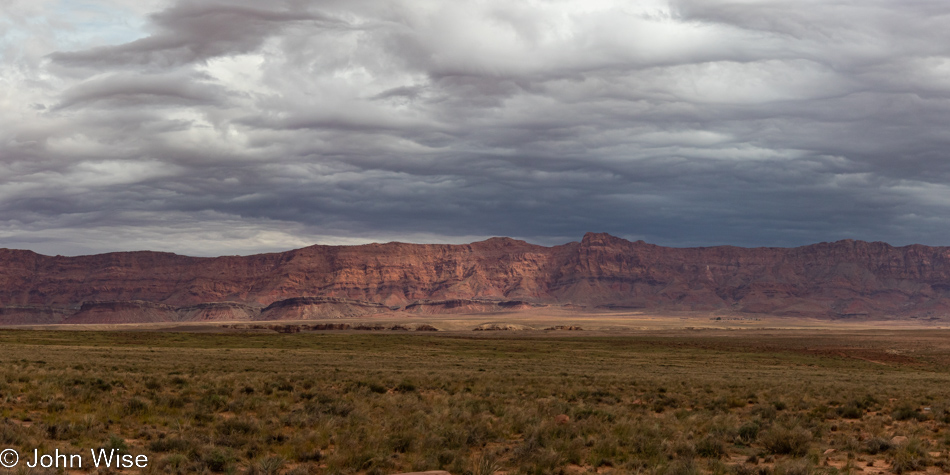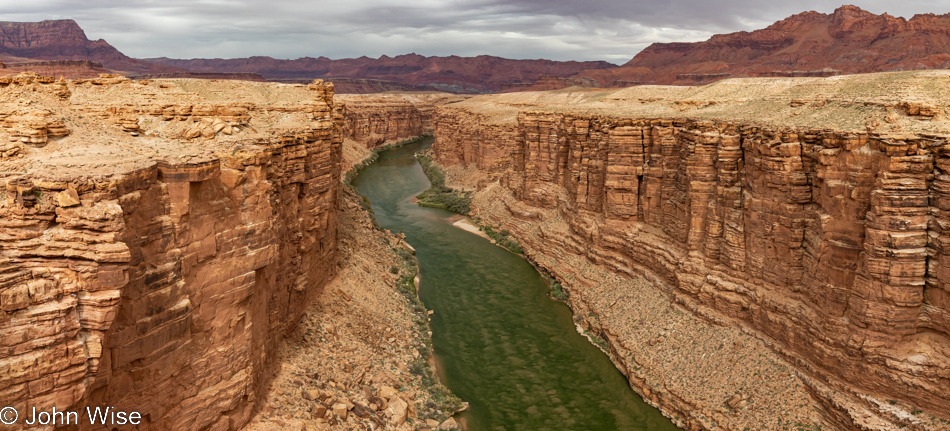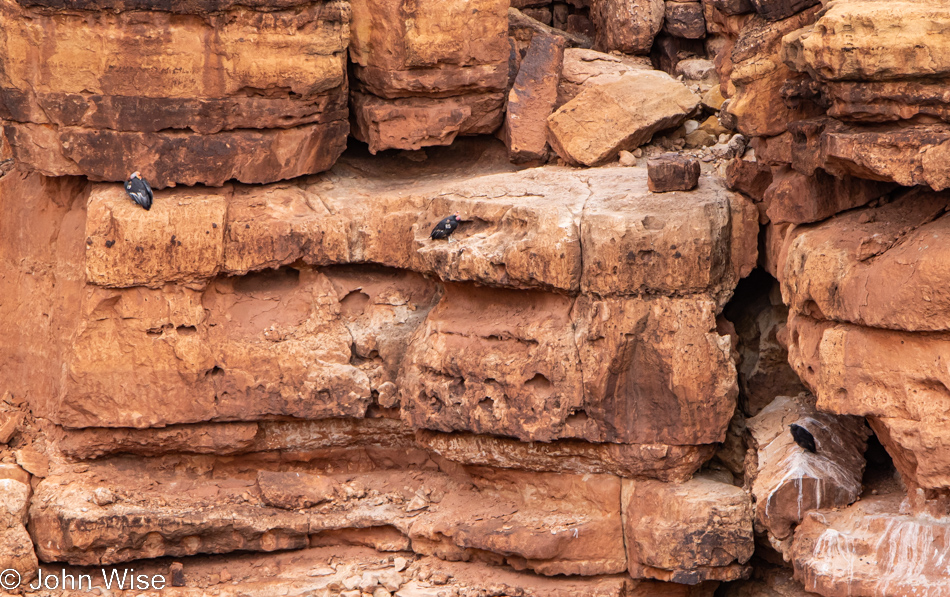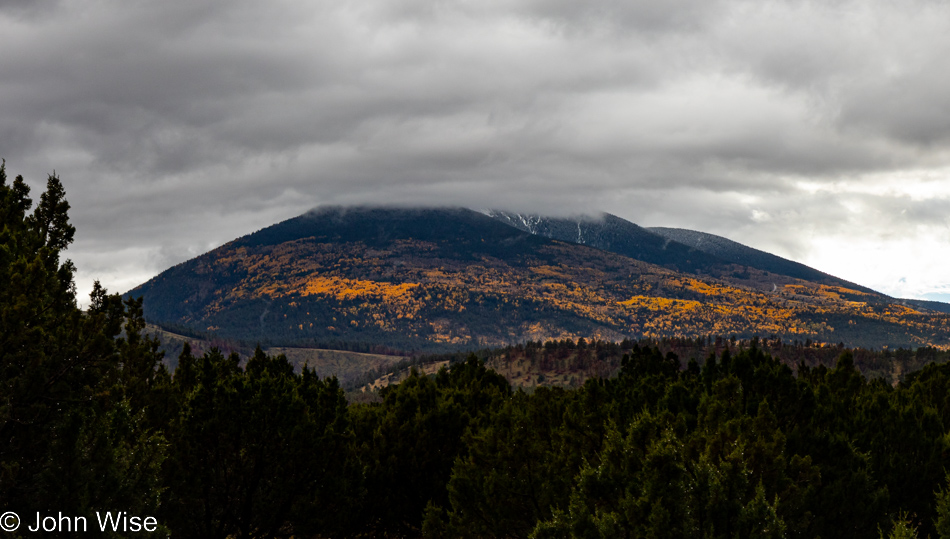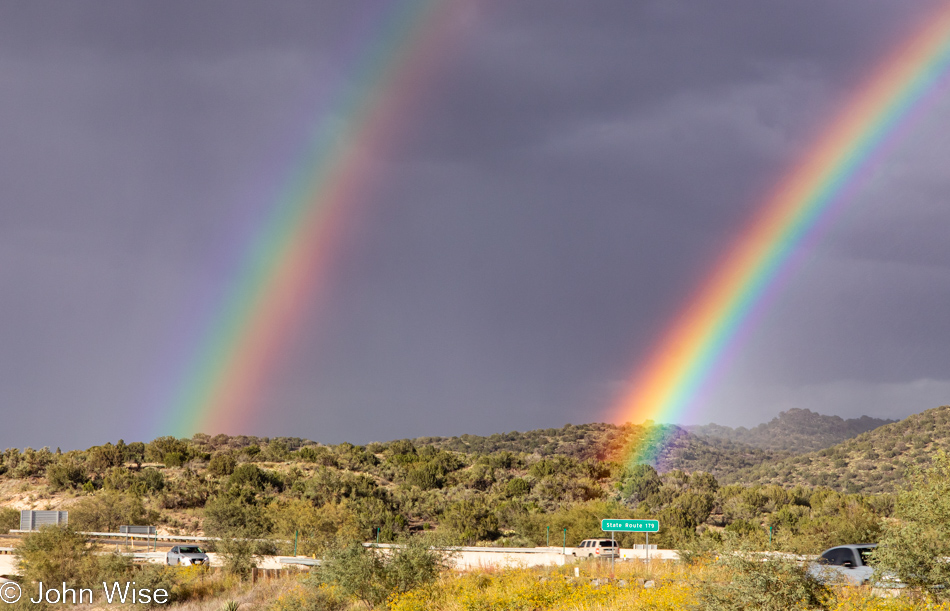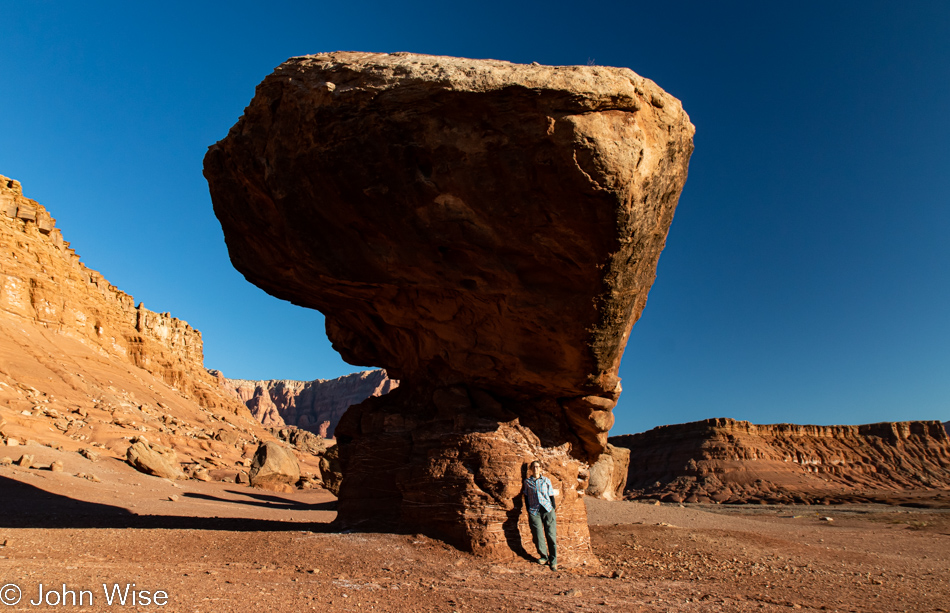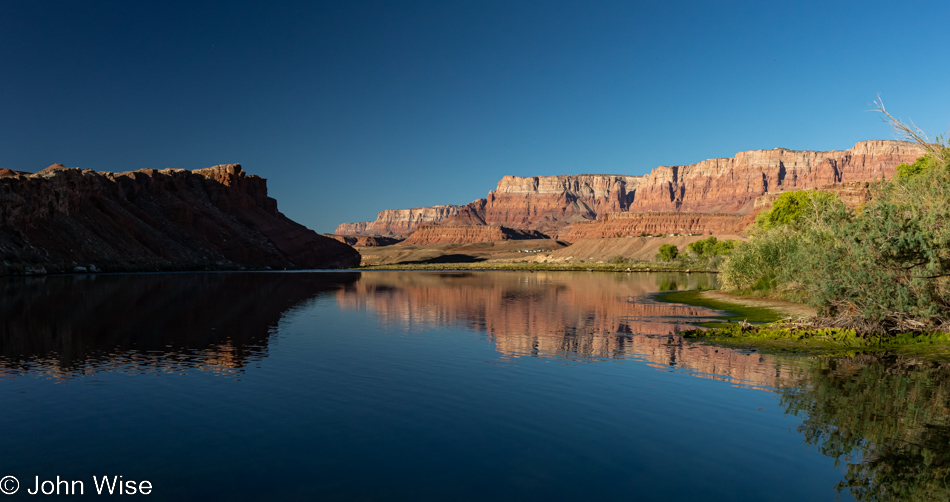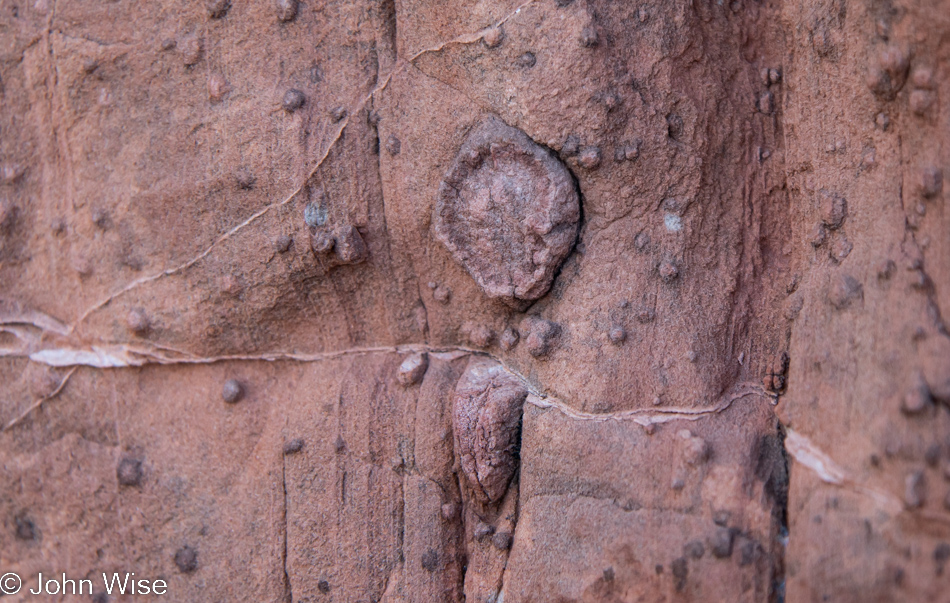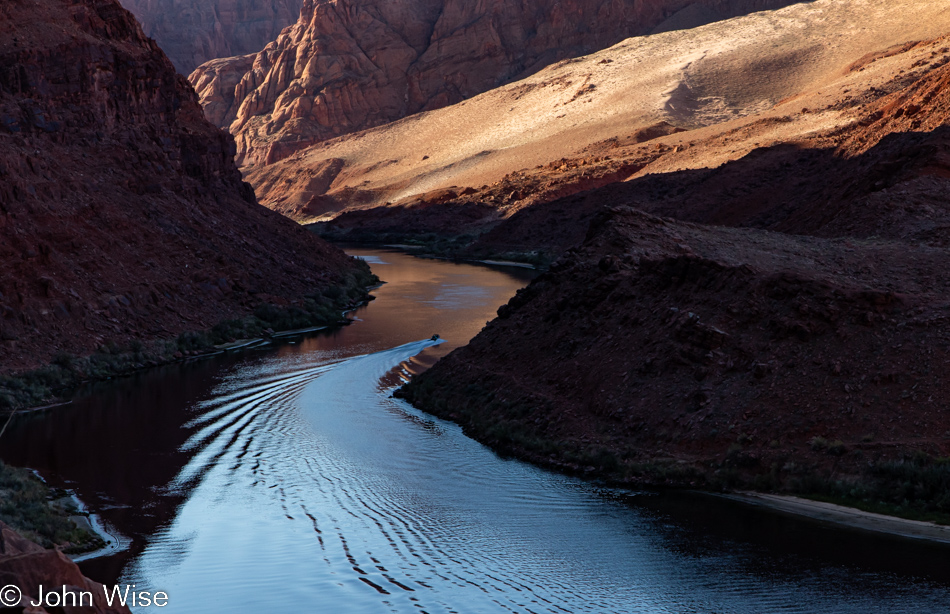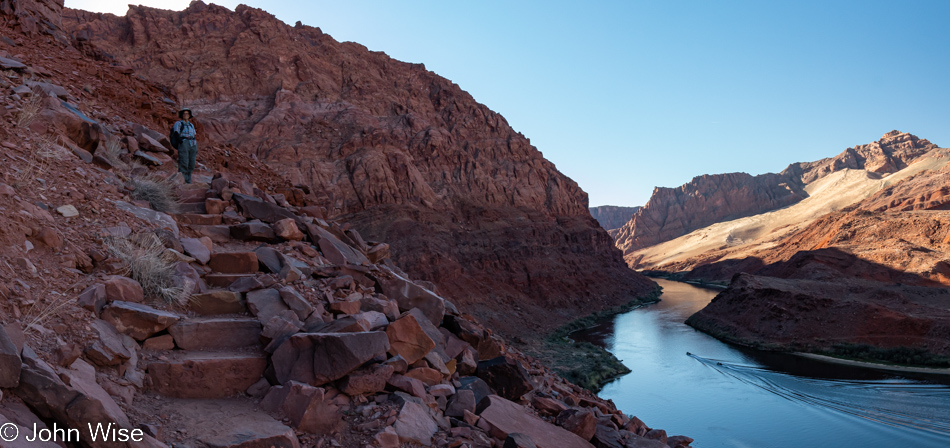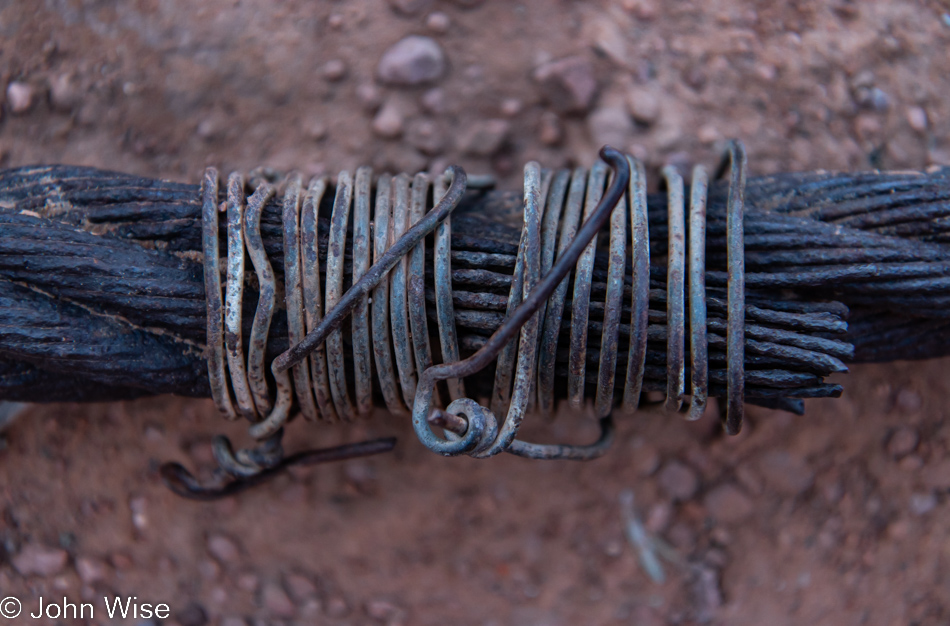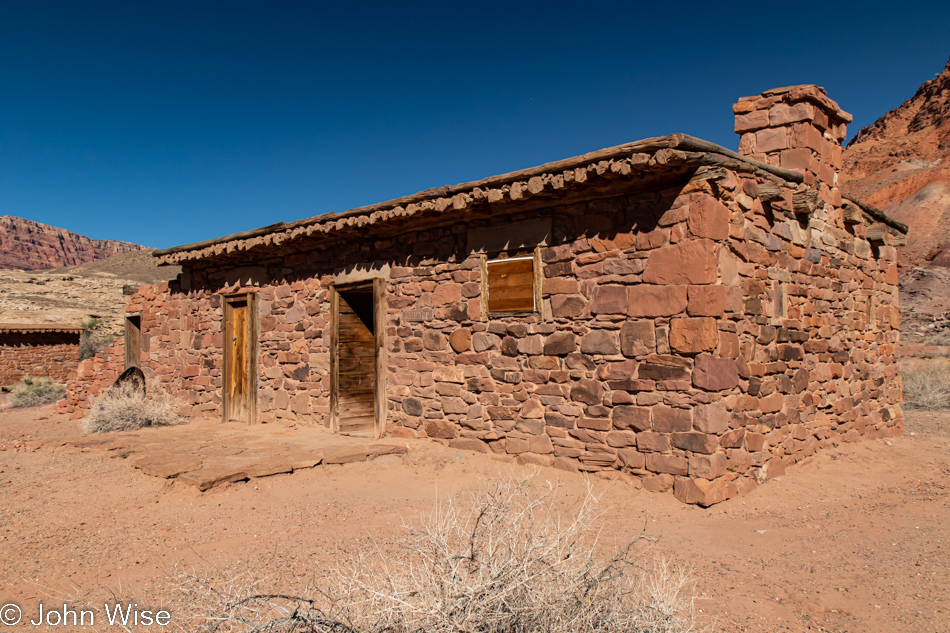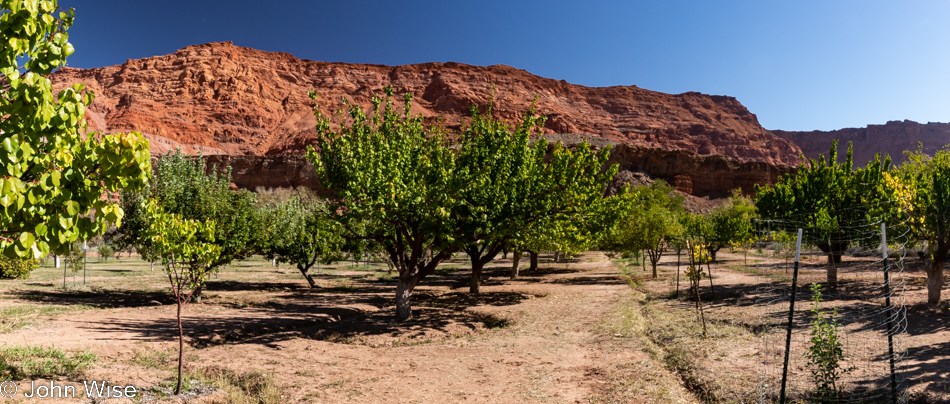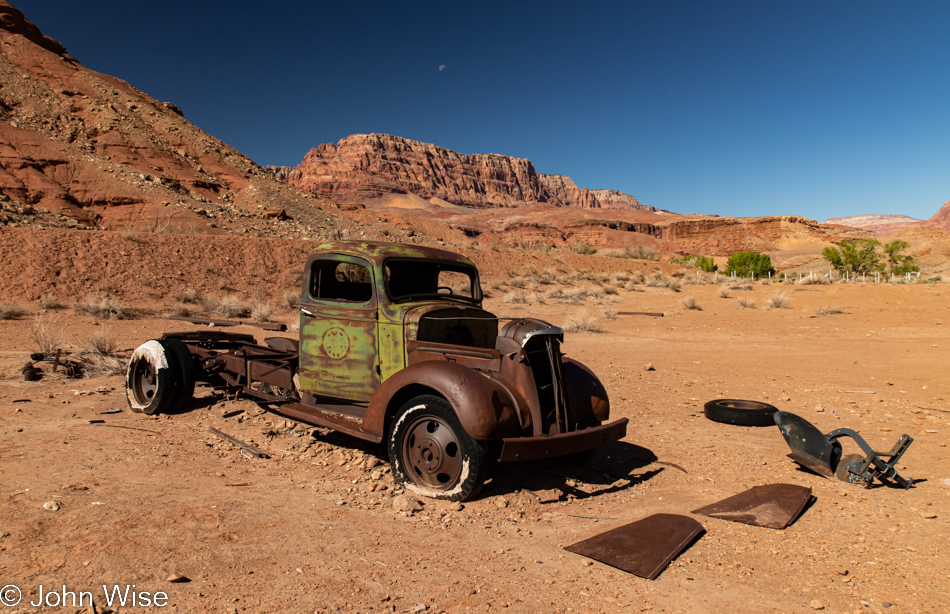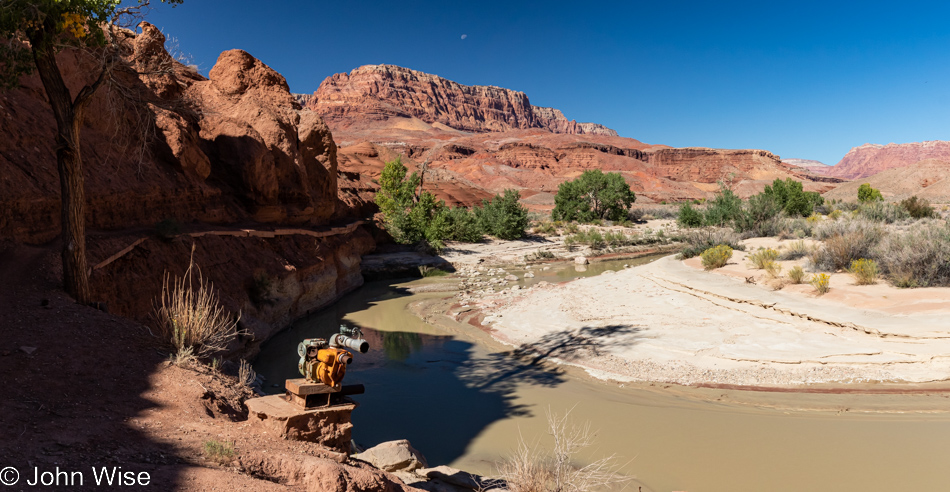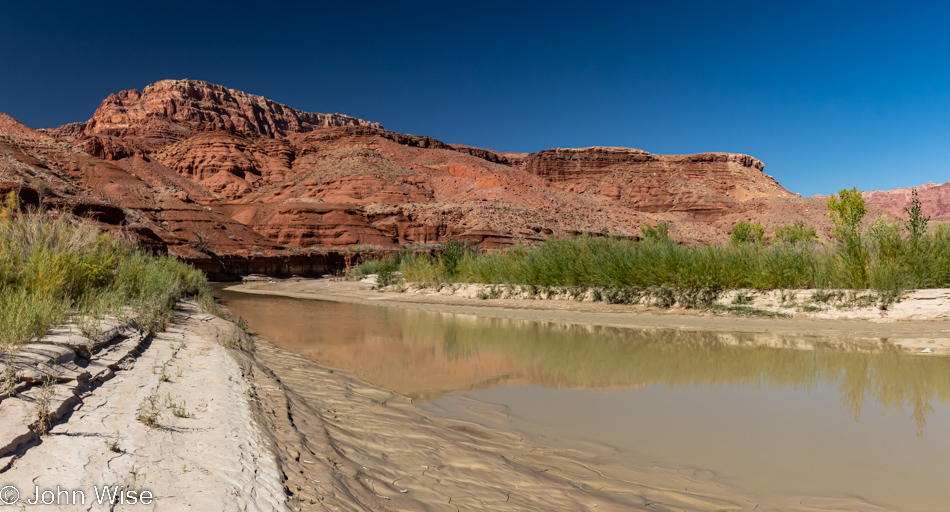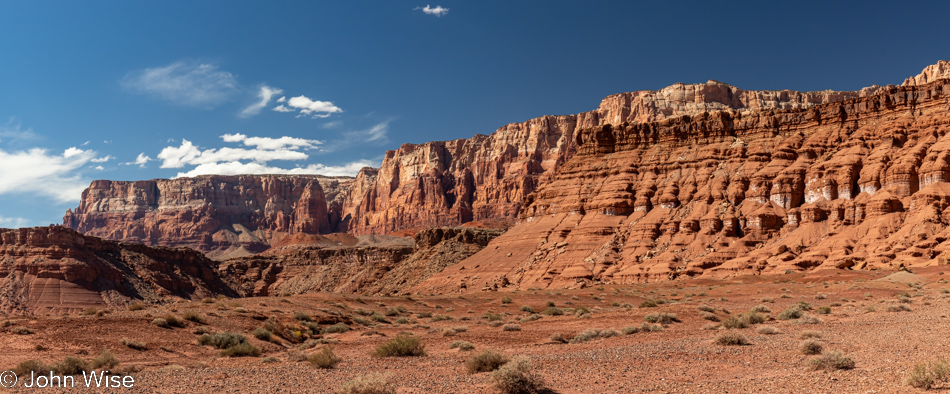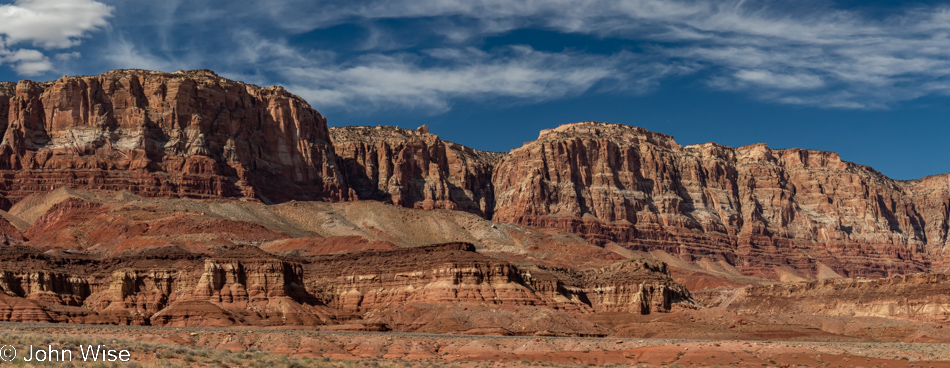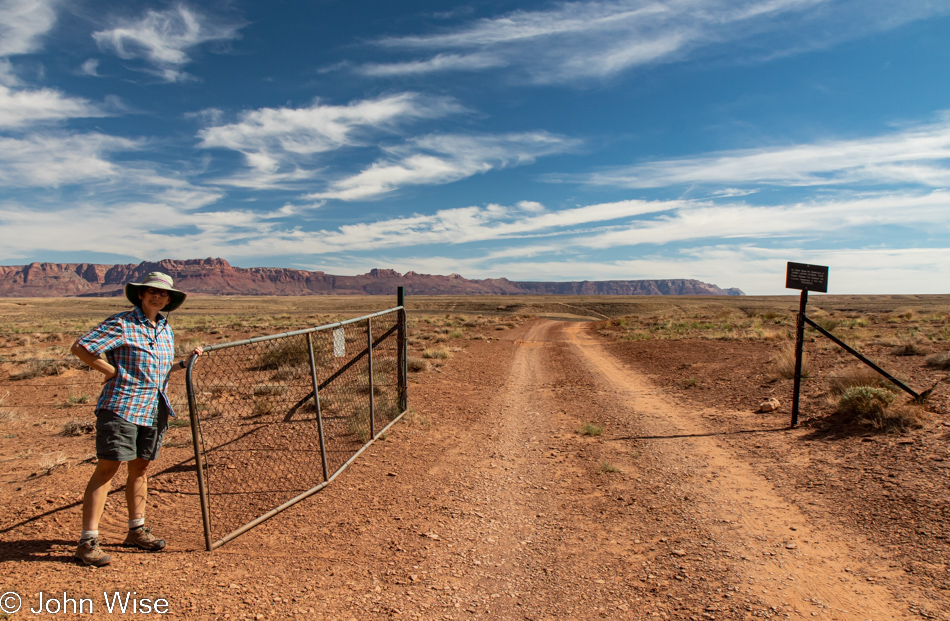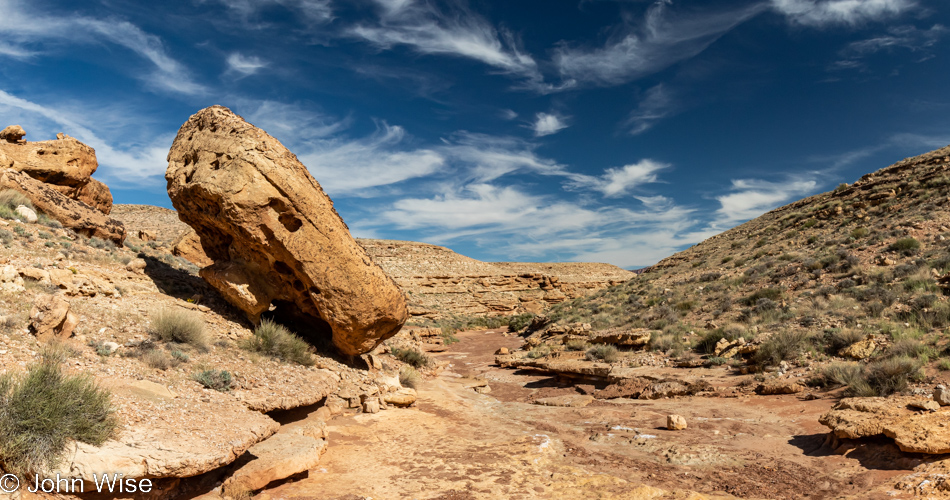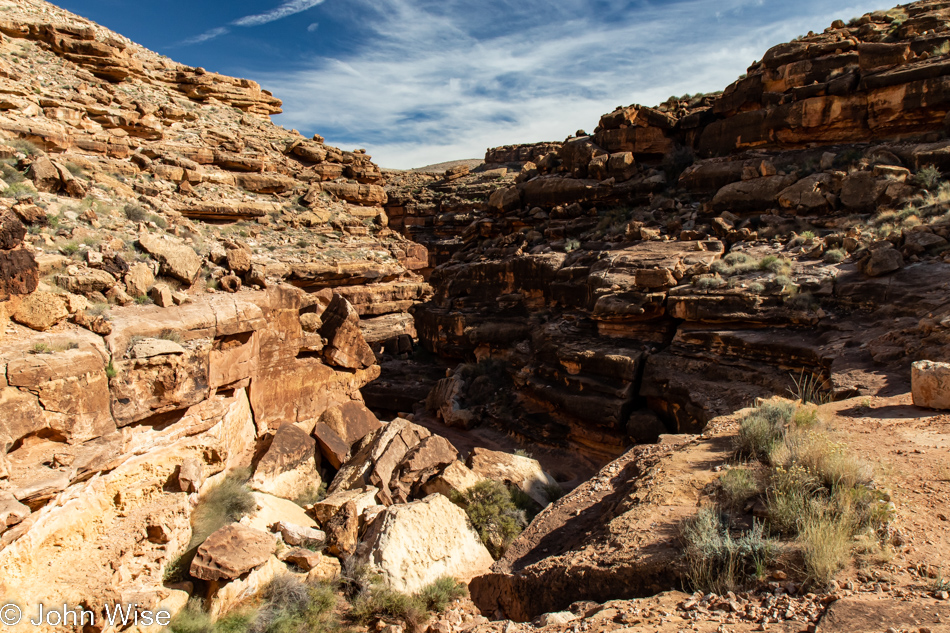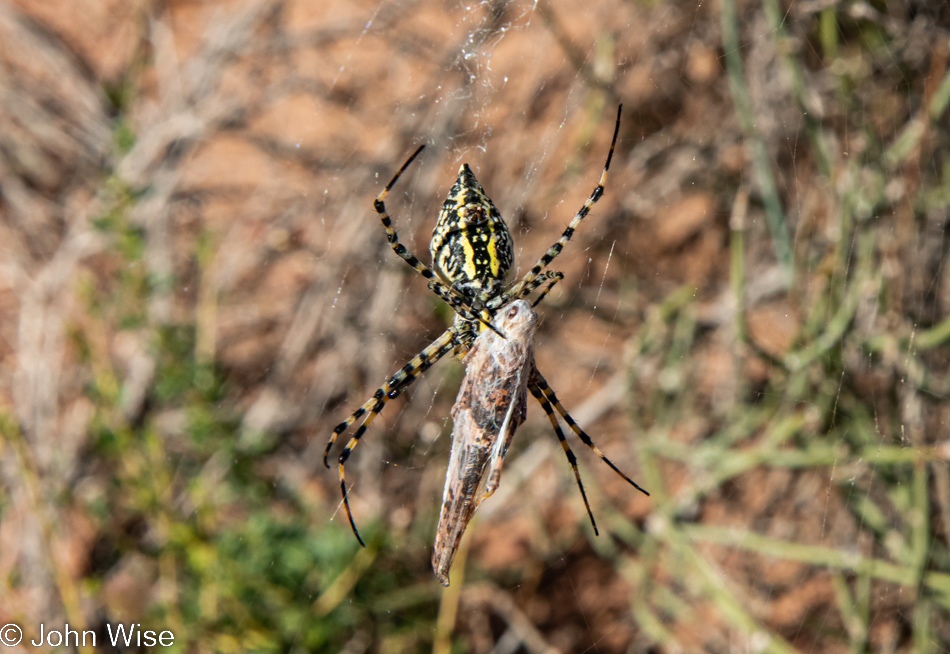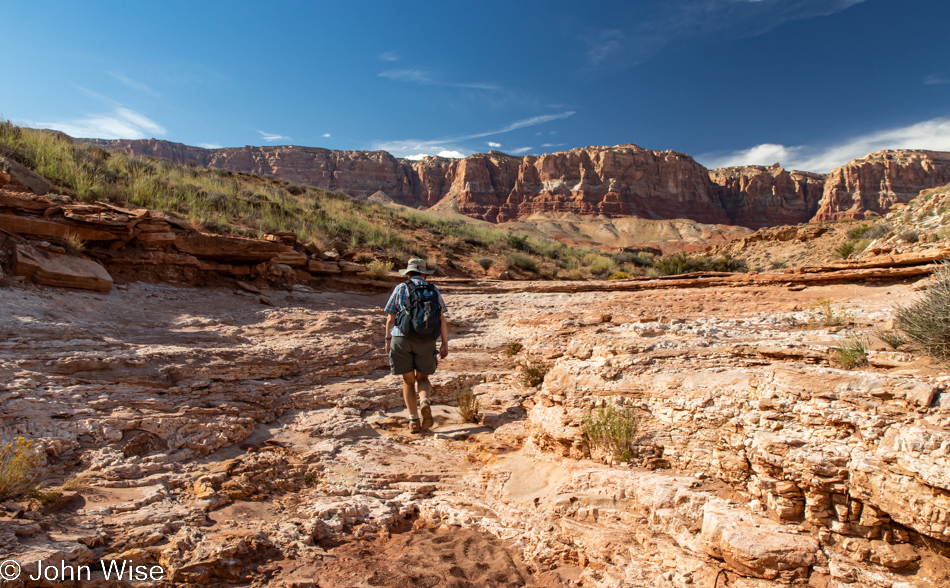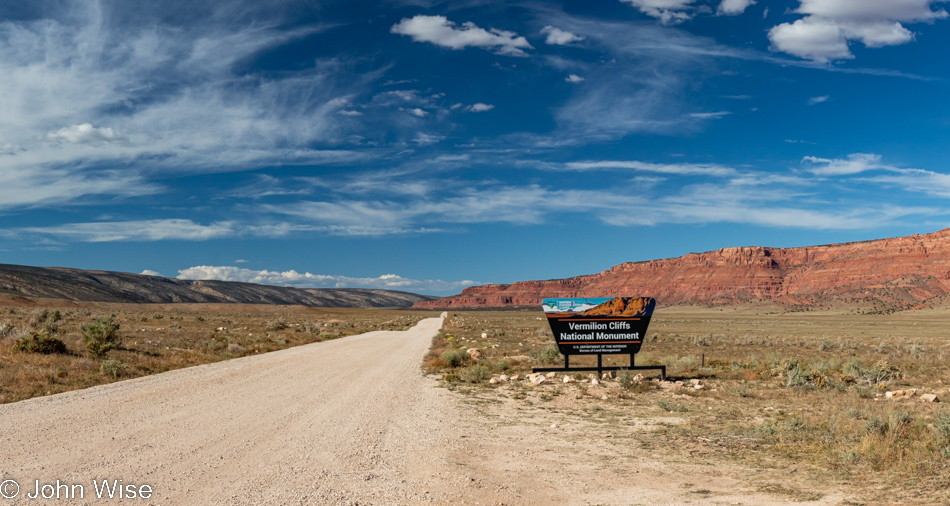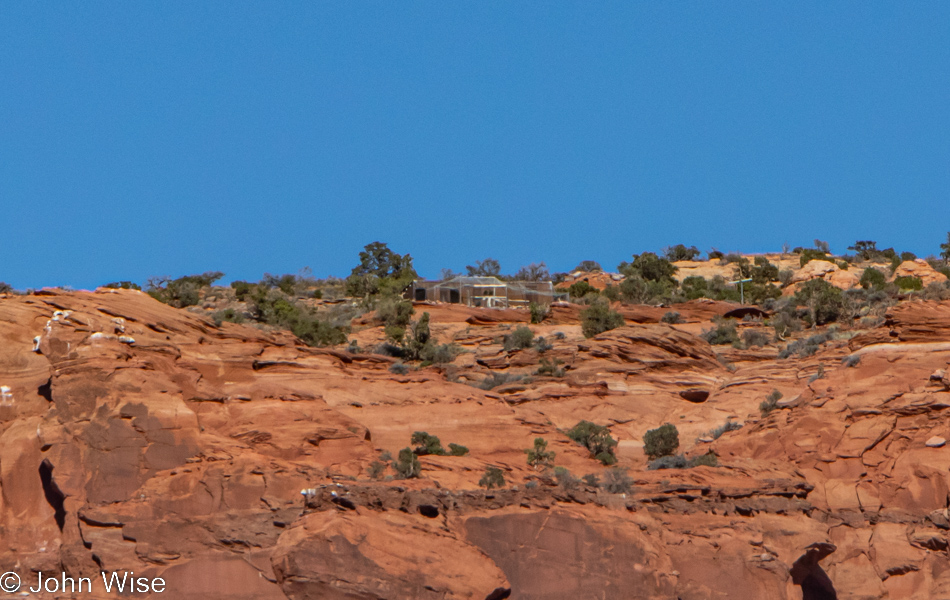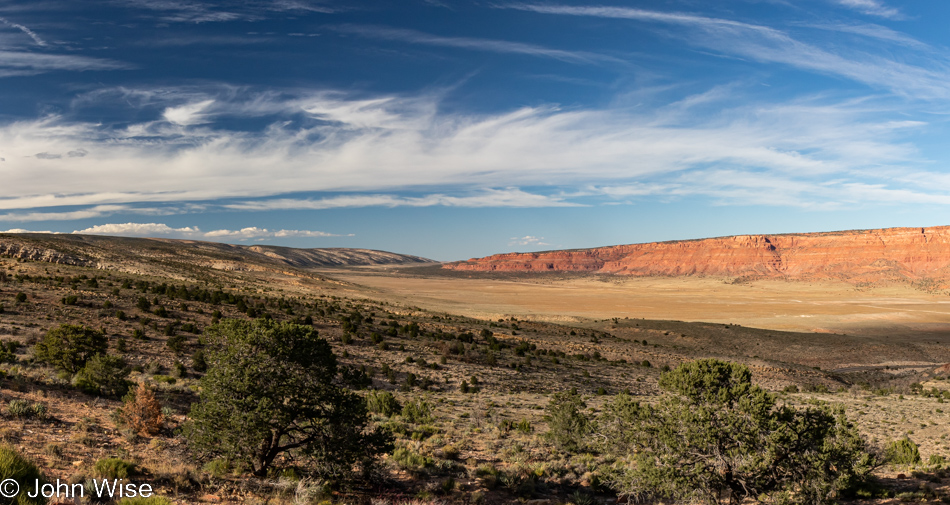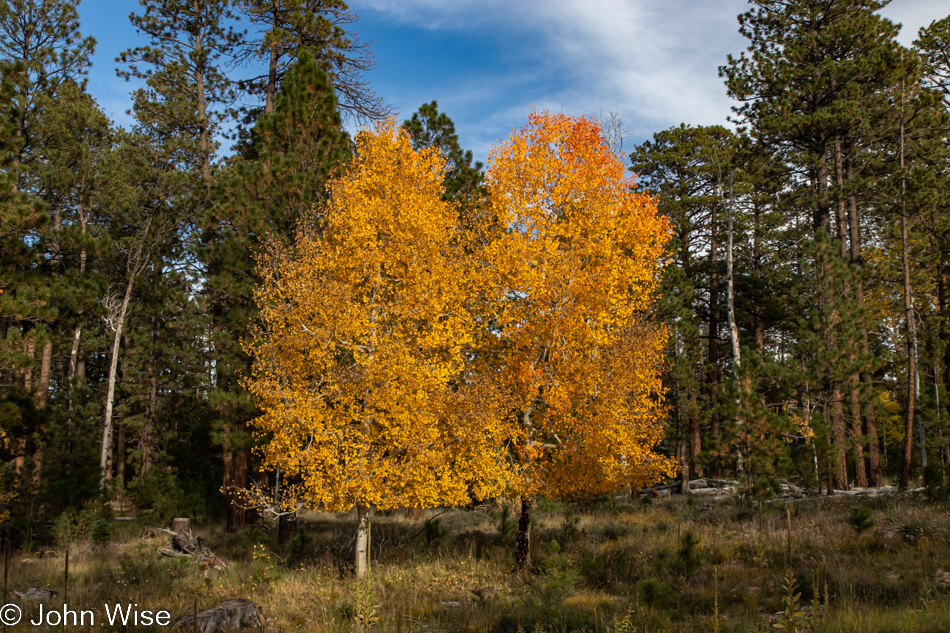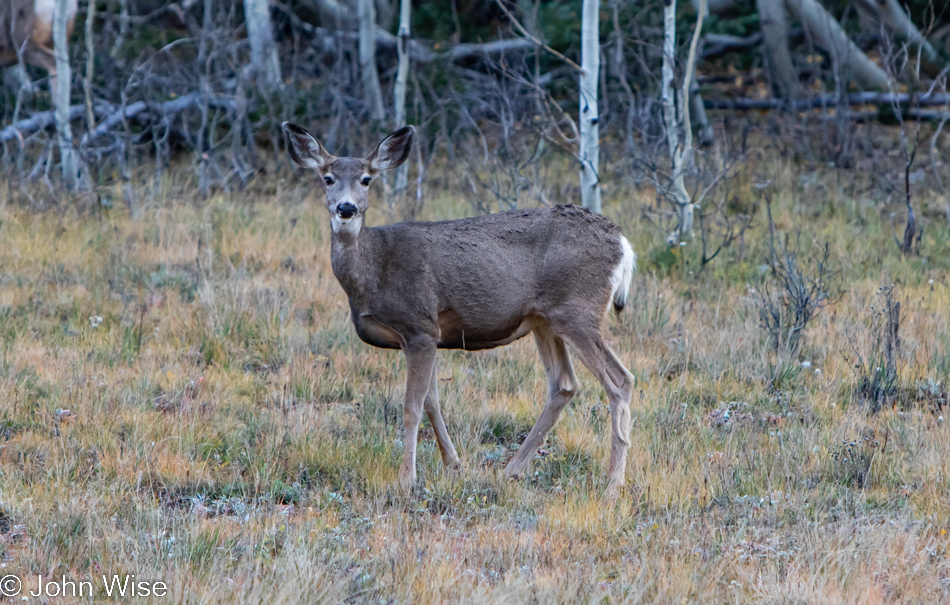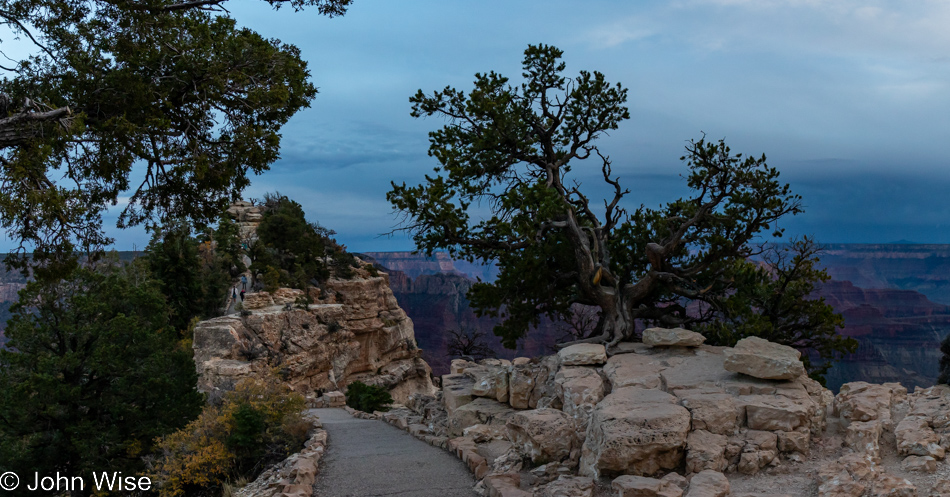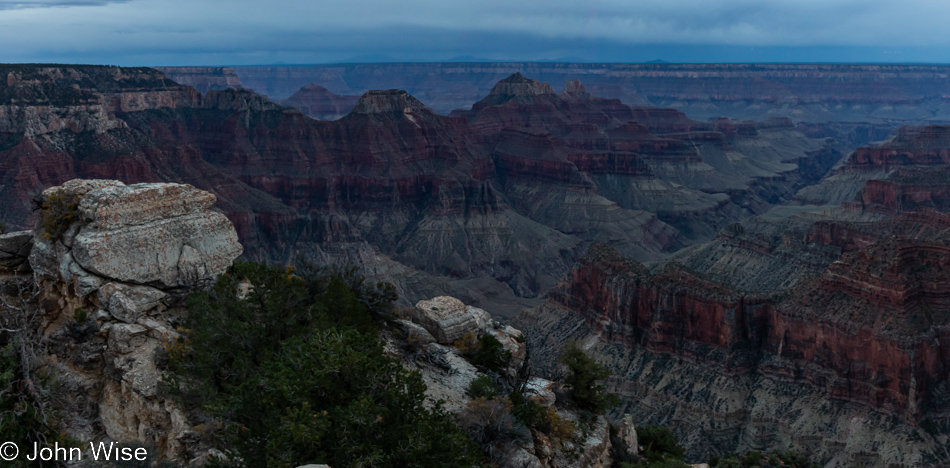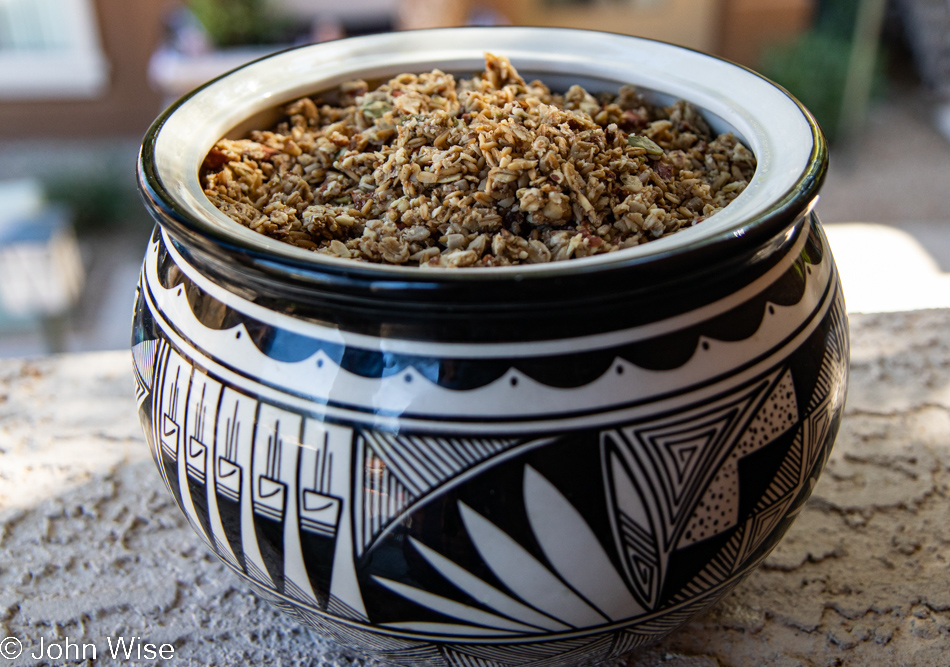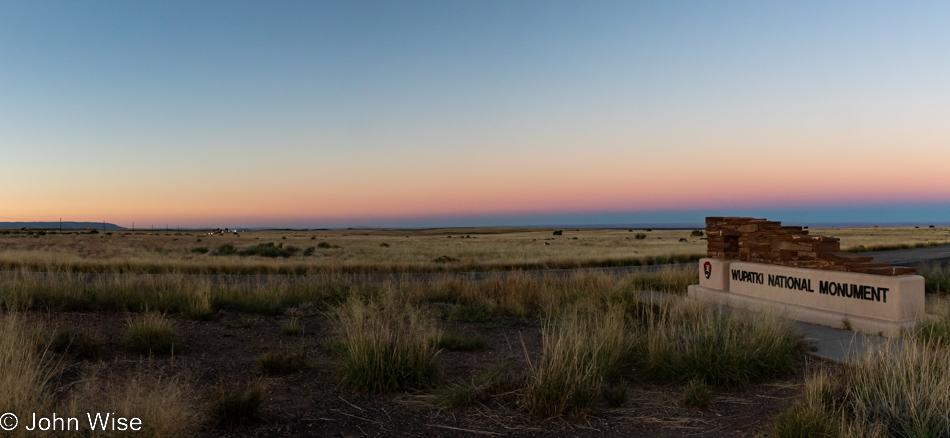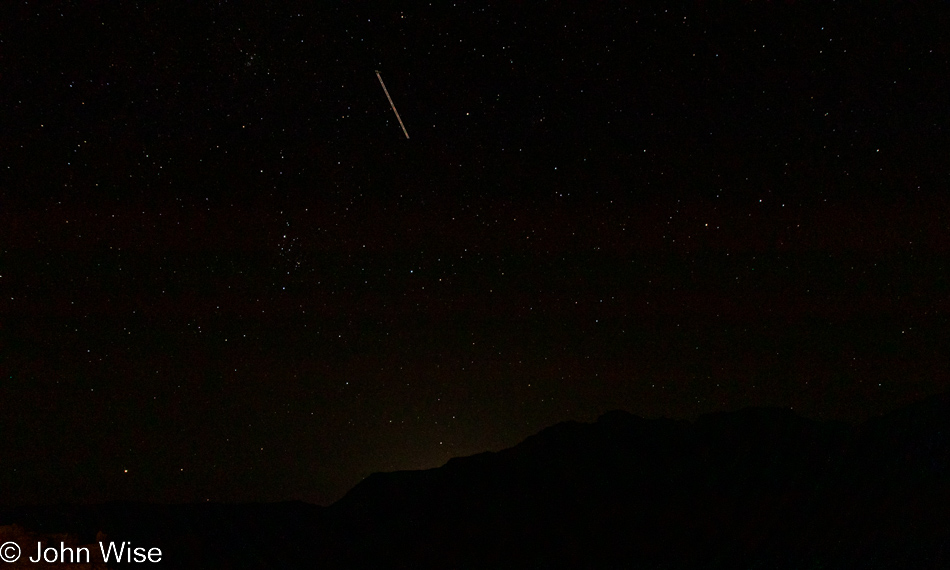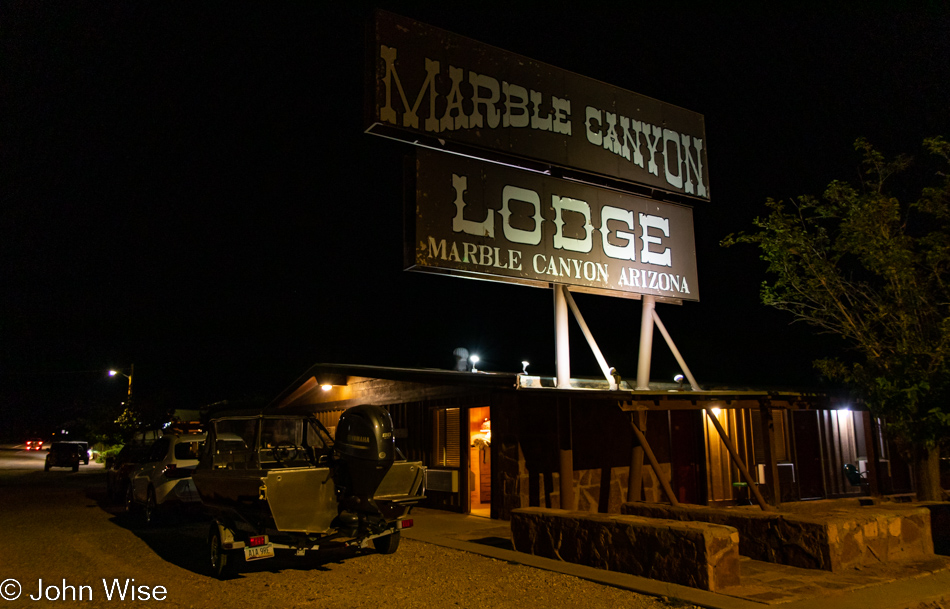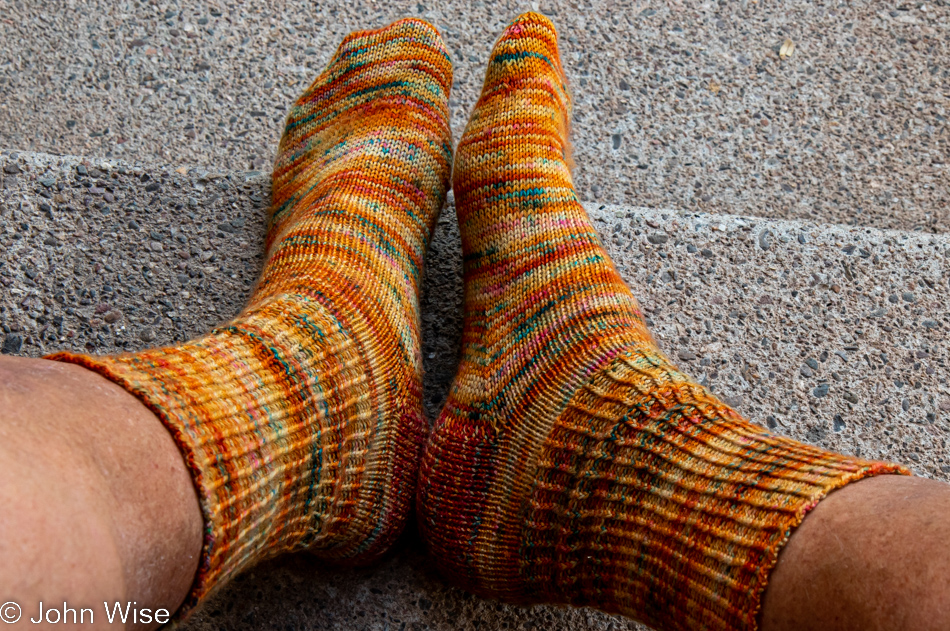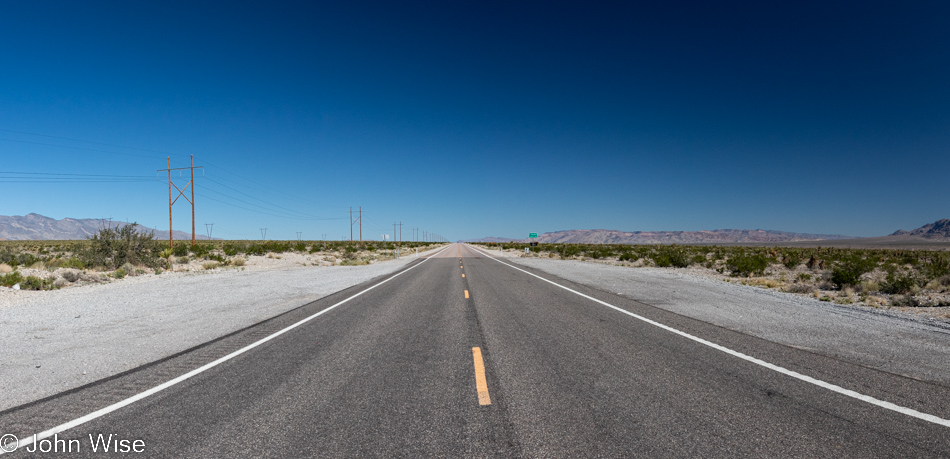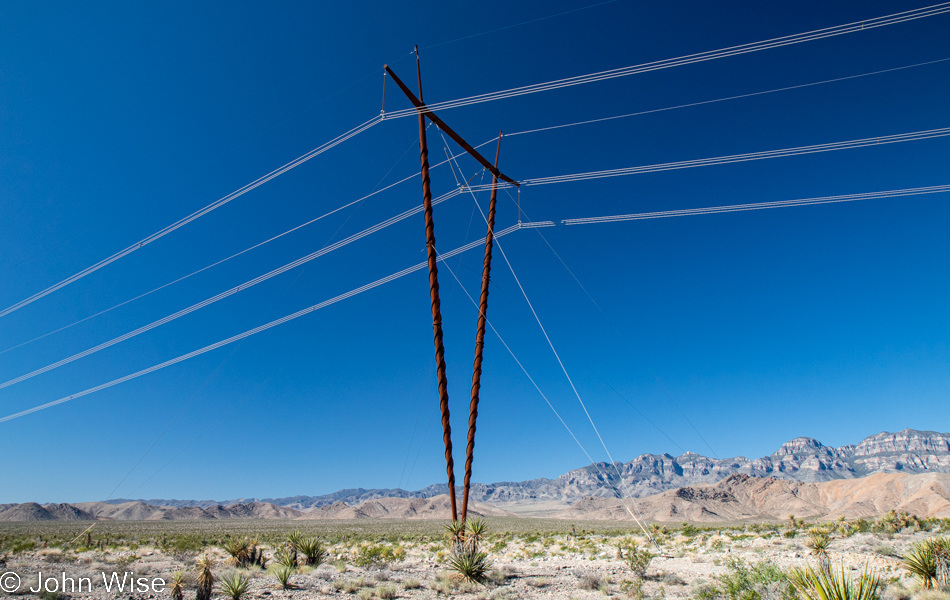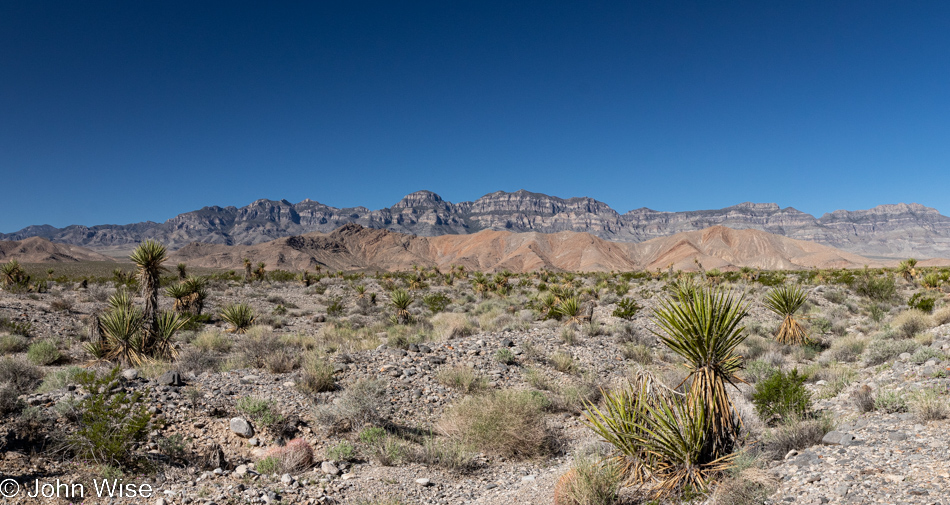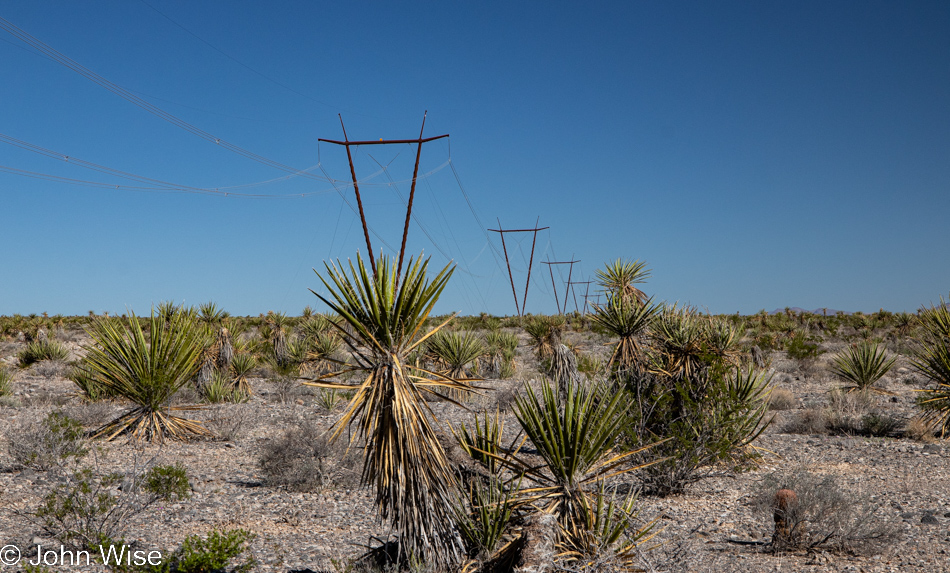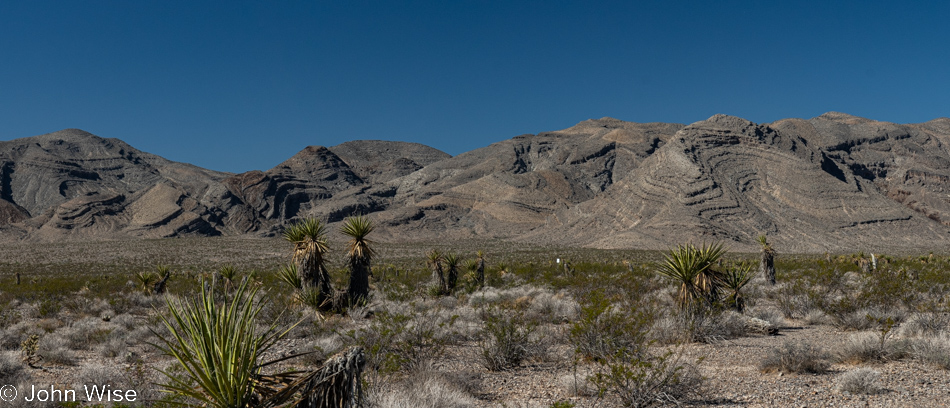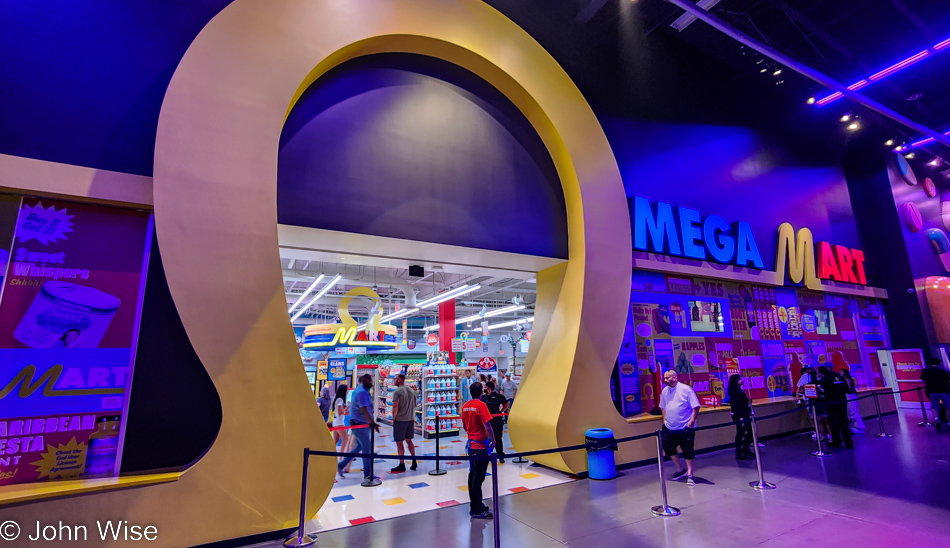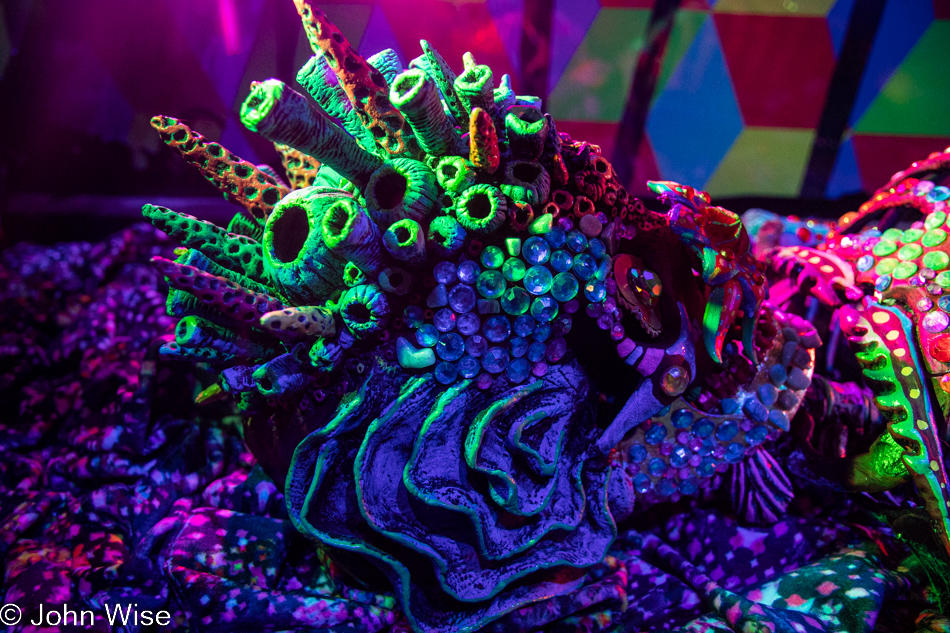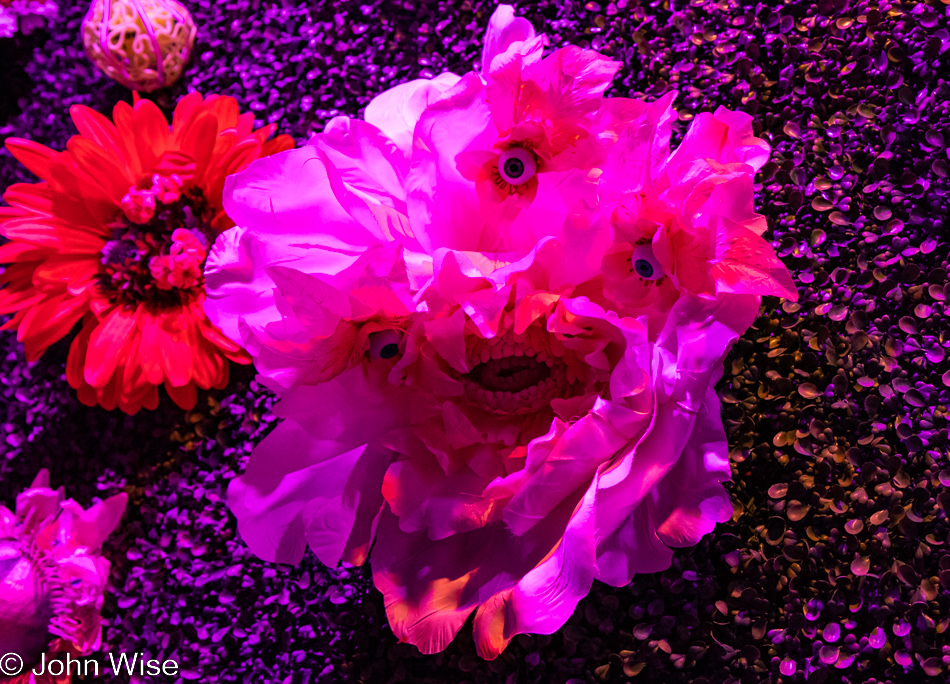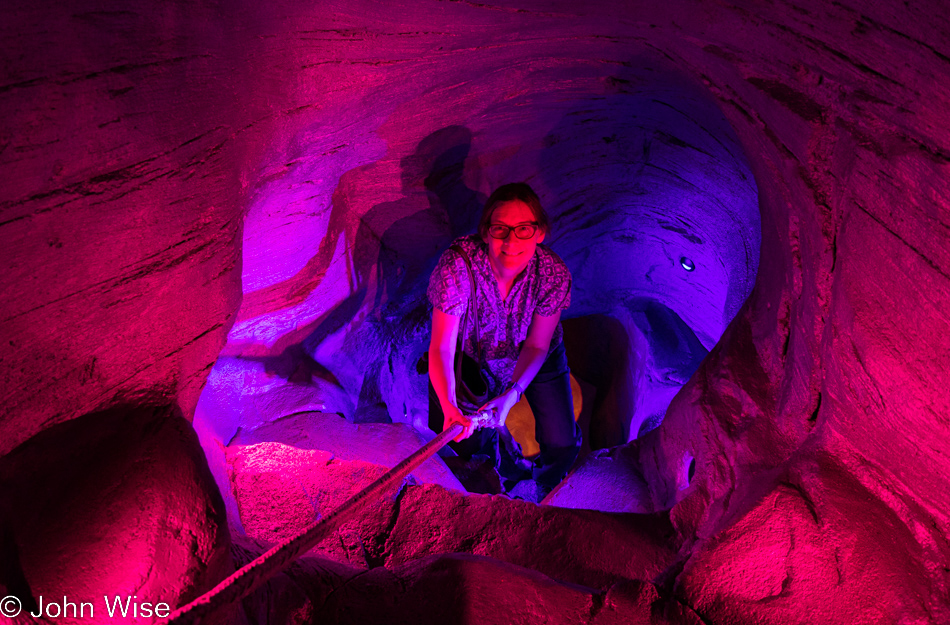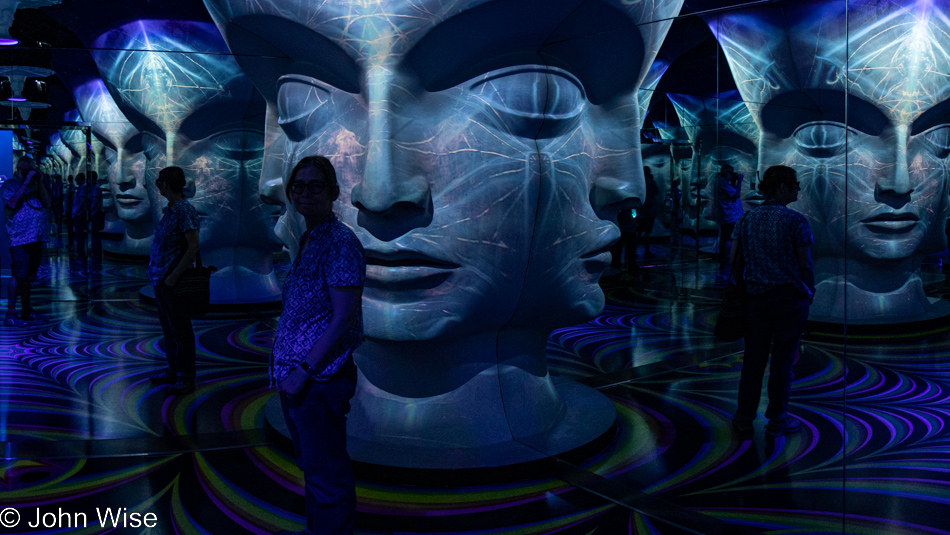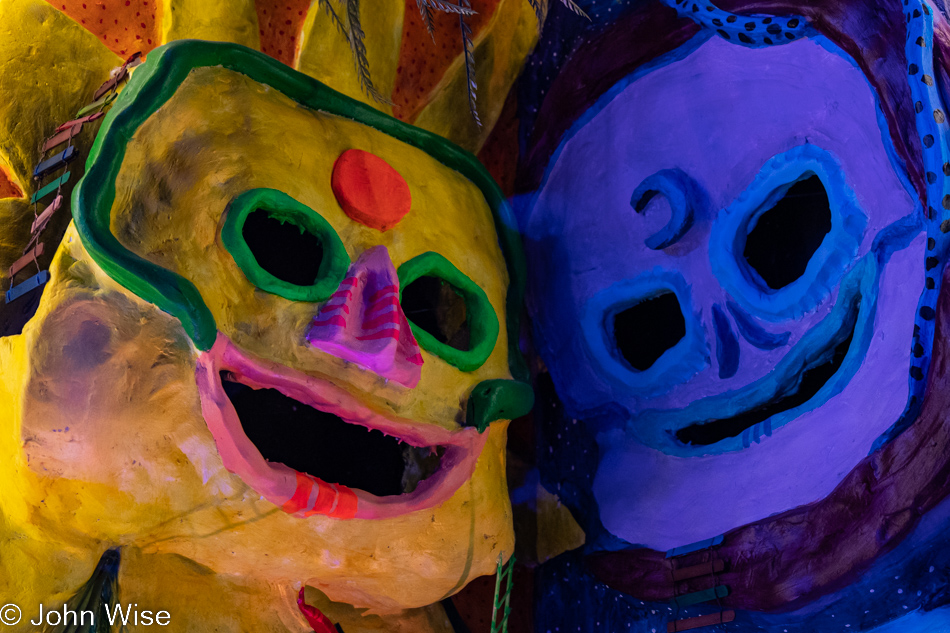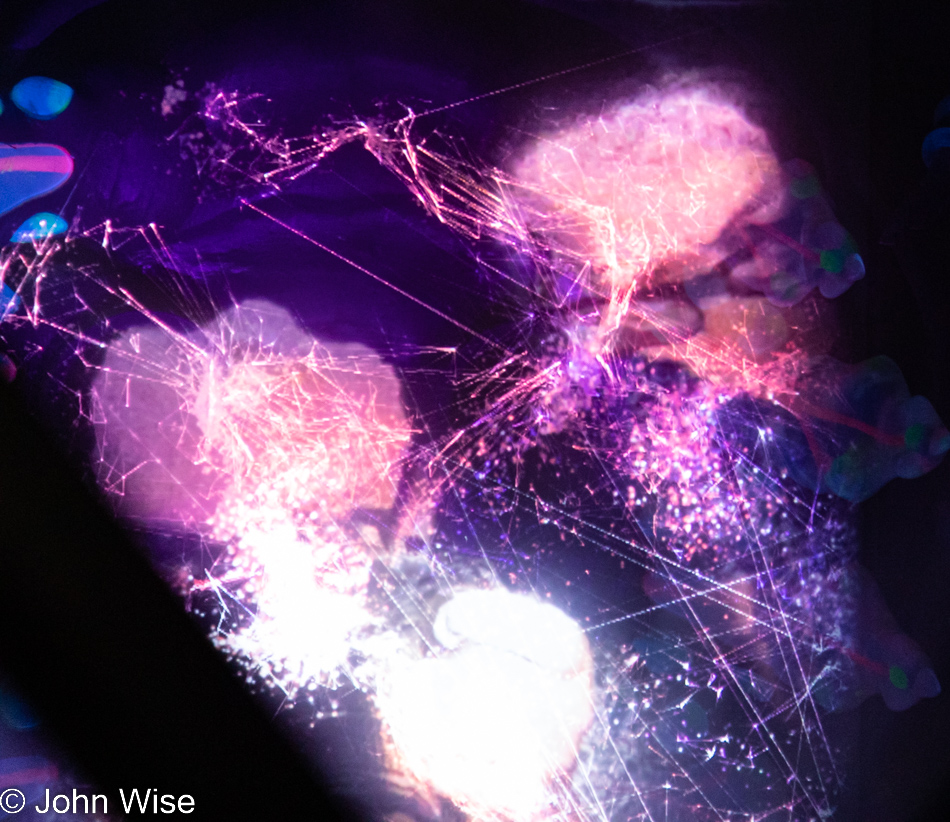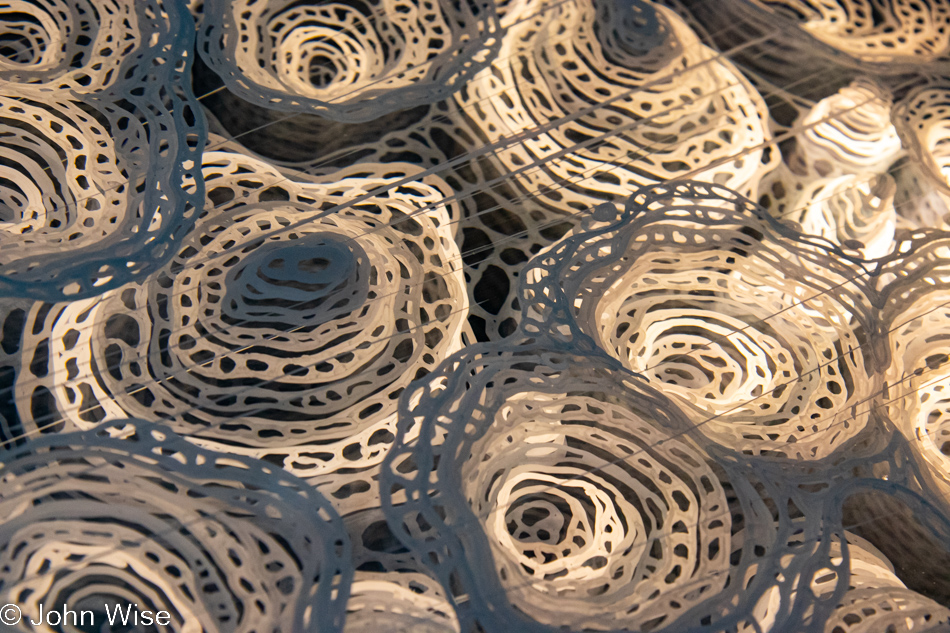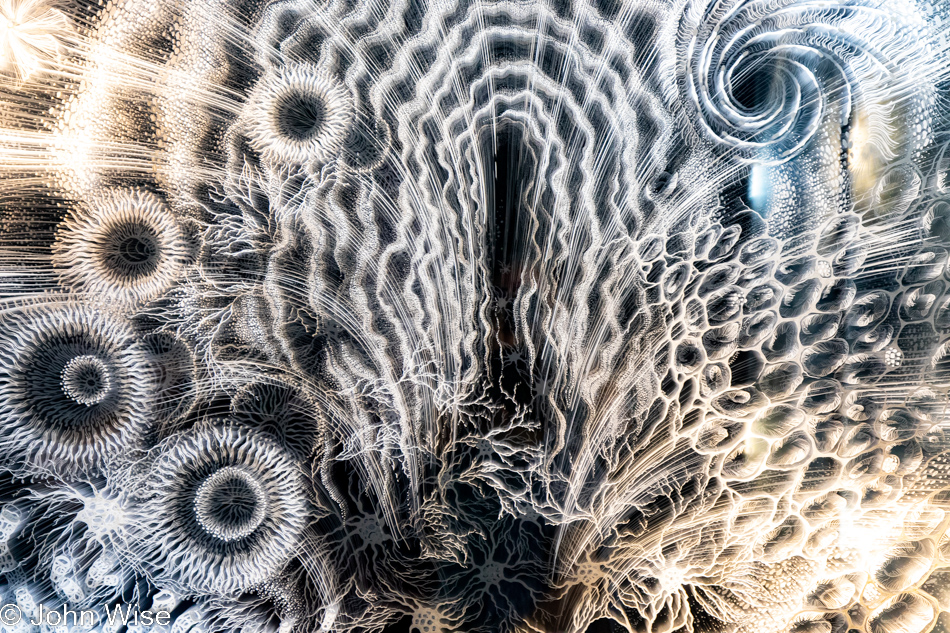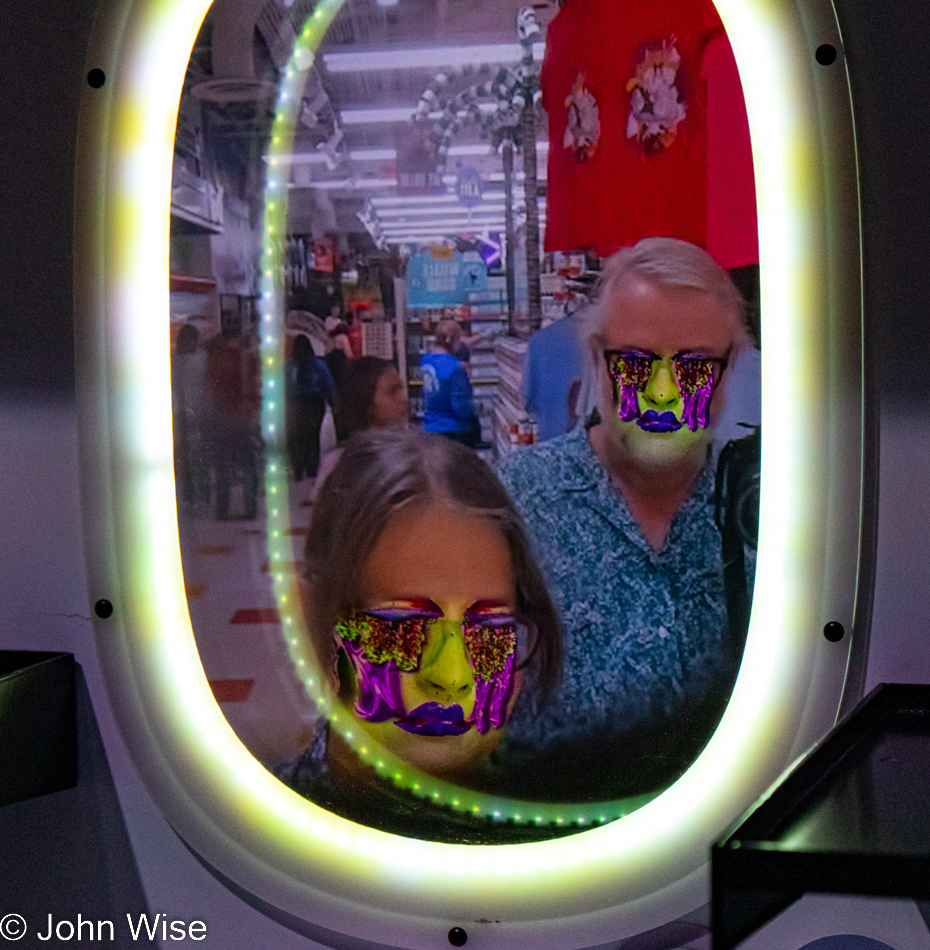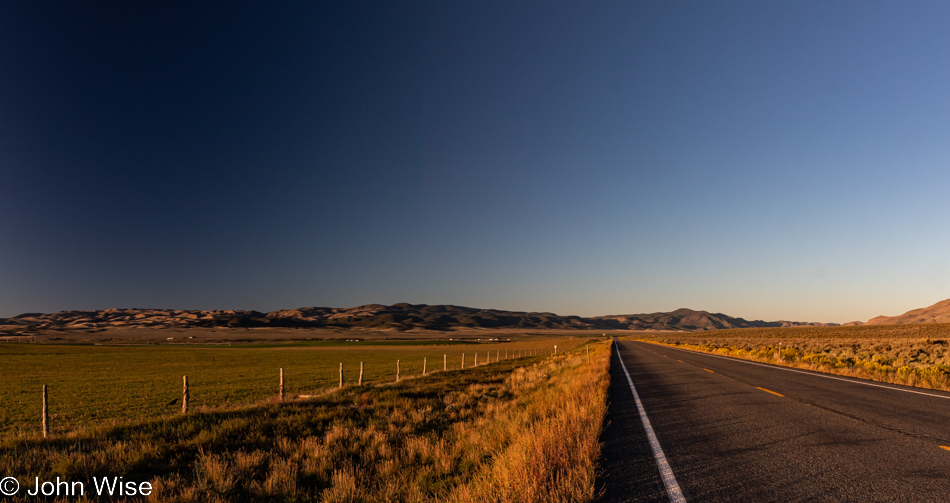
Spent the night in Beaver, Utah, and woke with the rising sun. We were gone before the first rays poked over the horizon. Our idea was to get to Nevada as soon as we could, but obviously not without coffee, and so with only one espresso shop in Beaver, we visited their quite crowded and slow drive-thru. It was a cold 37 degrees (under 3c) when we got in the car at the motel. Our tire pressure sensor came on to inform us of the low pressure, but with nowhere to fill them this early, I figured they’d be okay. We turned on our seat heaters, which was a bit of a surprise when, just the day before, the highs in Phoenix were still clocking in at over 100 Fahrenheit, so this winter routine was way out of the ordinary.

We probably weren’t two sips into those paper cups of java before spotting Penny’s Diner on the western edge of Milford. The idea of a hot breakfast with cups of bad coffee instead of the Americanos we picked up hit a chord with us. Our original idea was to find a spot along the 120-mile drive to the Great Basin National Park to dig into the homemade granola we brought with us, but the call of the greasy potatoes and bacon wasn’t to be resisted, even if it turned out to be mediocre. This combo of traveling and diner is such a classic setup that it easily fits in the adventure and helps round it out, which probably means I’m leaning into some romanticized ideas of nostalgia.
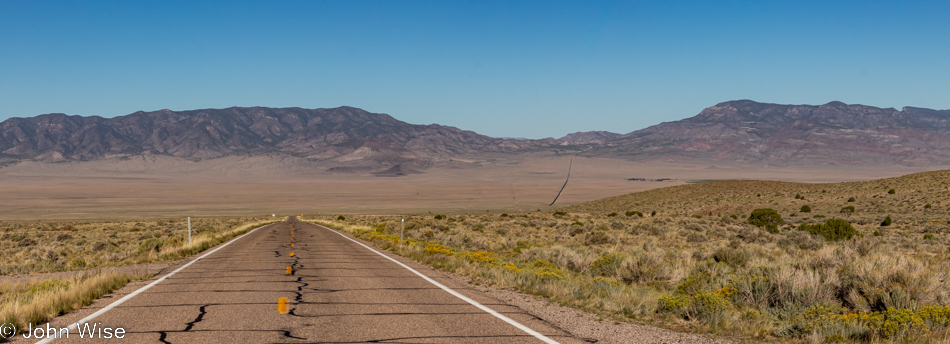
Out on the road after breakfast. The abandoned coffees were still warm, making for a great continuation of our driving chores.
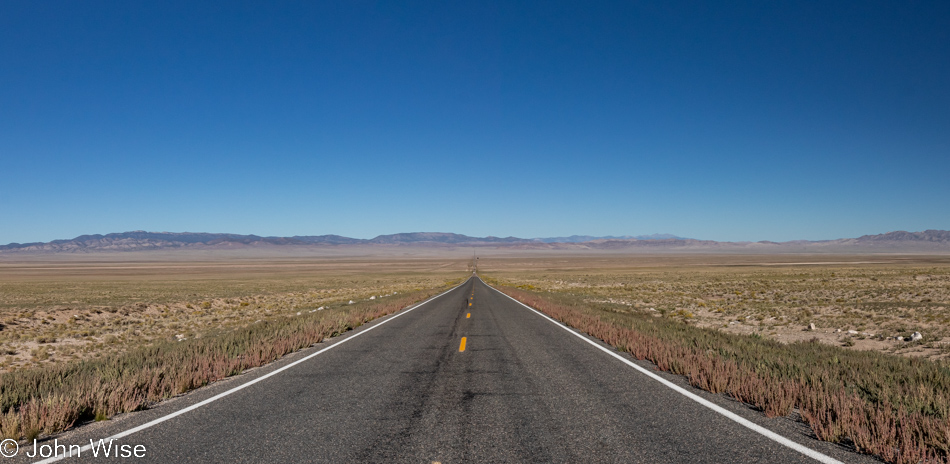
I don’t believe these photos come close to sharing how intriguing the landscape is out here. Not the mountains in the distance, not the amaranth roadside, certainly not the asphalt, and not even the clear blue skies; I’m talking about the desolation. While, on one hand, there’s little to photograph in a bleak landscape, it’s difficult for us not to stop and take it all in, admiring how far our eyes can see without fixing on much of anything between it and miles into the distance.
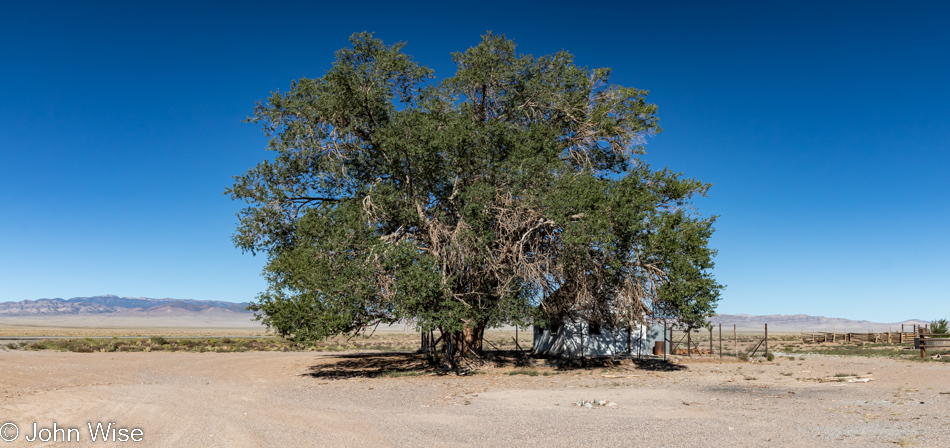
Further along through the emptiness, we spot what appears to be a solo tree standing above everything else. There are actually a few trees in a tight cluster, a cattle corral and packing area where, at one time, cows were sent off to market, and a tiny two-room house. There’s some light graffiti in the house, but it’s remarkably intact and mostly left alone, and obviously, the trees are still getting enough water, a strange oasis in the middle of nothing.

We were fewer than 10 miles from Nevada when we encountered this little abandoned oasis that sprung up near Clay Spring, which runs through the property. As for the waters still flowing here, they join Lake Creek, which also feeds nearby Pruess Lake. You can be certain I wanted a closer look at the old cabin, but with “No Trespassing” signs posted every 6 feet along the fence, there was no ambiguity regarding the idea of anyone really minding if I wandered around.

Caroline was reading the various stickers on the Nevada state line sign, waiting for me to come over for the obligatory selfie, but I figured that we’d be posting something far more interesting once we got to our destination over in the national park.
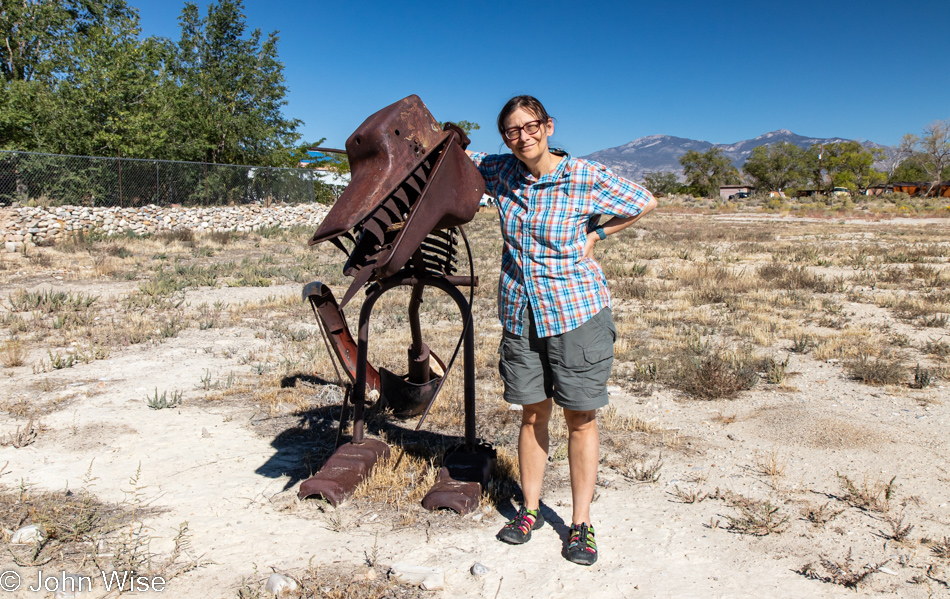
We drove right by this old sculpture, thinking it must be similar to one we passed years ago. Well, we were wrong; it is the same sculpture, but it used to be in a different location here in the town of Baker, Nevada. Nearly 20 years ago, on another quick weekend trip that saw us visiting Bryce National Park back in Utah before coming to Great Basin National Park, we stopped at an abandoned building that featured this dinosaur made of old car parts standing guard and took a photo of Caroline sitting with it. Today, that old building is a small market, and this rusting, friendly-looking work of art sits roadside, waiting for extinction as it will one day fade into the earth.
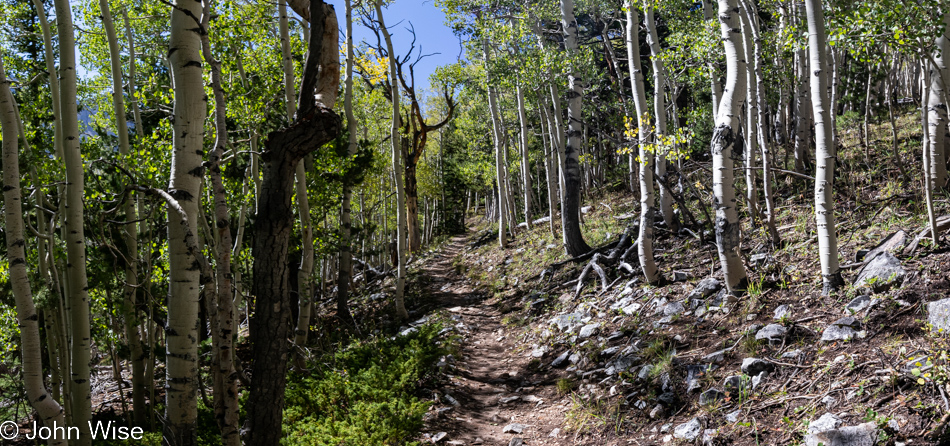
That two-hour drive that stretched into a nearly four-hour sightseeing trip meant we arrived at the national park later than might have been preferred. Arriving at the visitors center, we saw that we were here during the Annual Astronomy Festival, which explains why all the rooms in nearby Baker are sold out, but it also means the park is busier than usual.
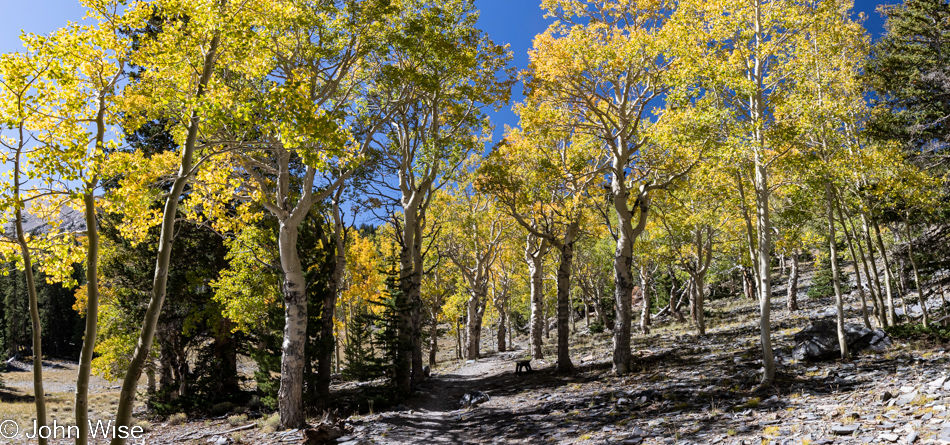
This is not the trail we were supposed to be on, but the parking lot at the Bristlecone Pine Glacier Trail was packed. We circled the area half a dozen times before giving up and heading to the overflow lot at the Summit Trail that not only leads hikers to the Wheeler Peak summit but over and around Stella and Teresa Lakes. This detour adds to our hike, but from the looks of things, it’ll be a great addition to the day; plus, we have the added benefit that there’s nobody else on this trail.
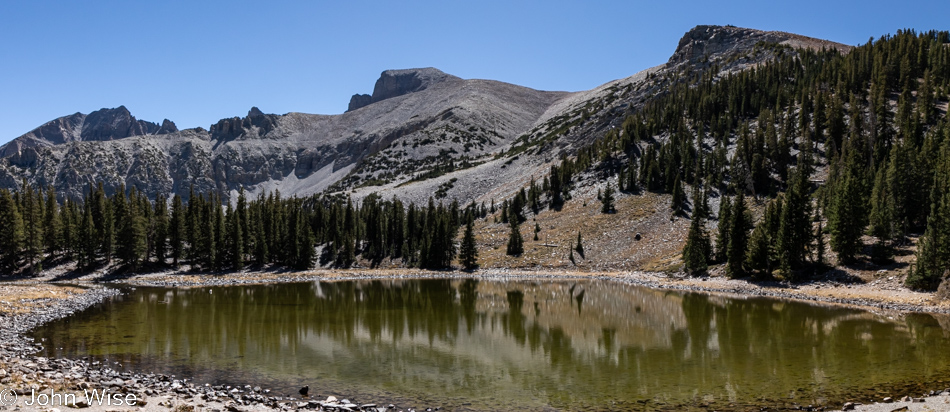
The first lake we pass is Stella Lake, with Wheeler Peak up at 13,065 feet (almost 4,000 meters) in the center (I believe) and Doso Doyabi to the left at 12,772 feet. Doso Doyabi is the Shoshone word for White Mountain.
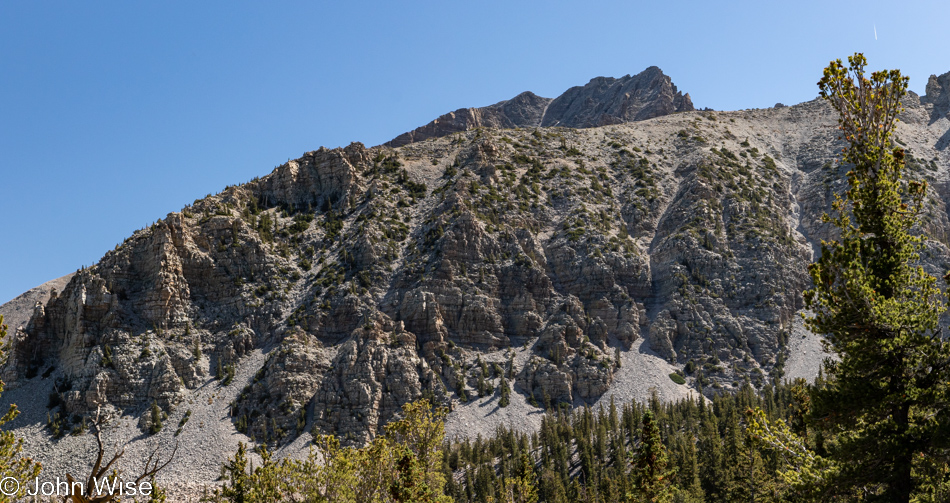
There was much more to this walk just to get this far, and I did take plenty of photos along the trail, but what looks so dramatically different at every turn to warrant photos doesn’t always come through when choosing images to represent the day. As a matter of fact, the 12 miles from the visitors center to the trailhead is worthy of a dozen photos as we rapidly gain elevation over the surrounding basin, but turnoffs are few and my sense of lack of parking ahead had me pressing through. And now that we are on the trail with two primary destinations and two secondary destinations, one of those being the previous lake, we needed to keep our pace moving forward. Be that as it is, I still need to stop and take deep consideration of the anomalies, such as how these mountainsides are eroding.
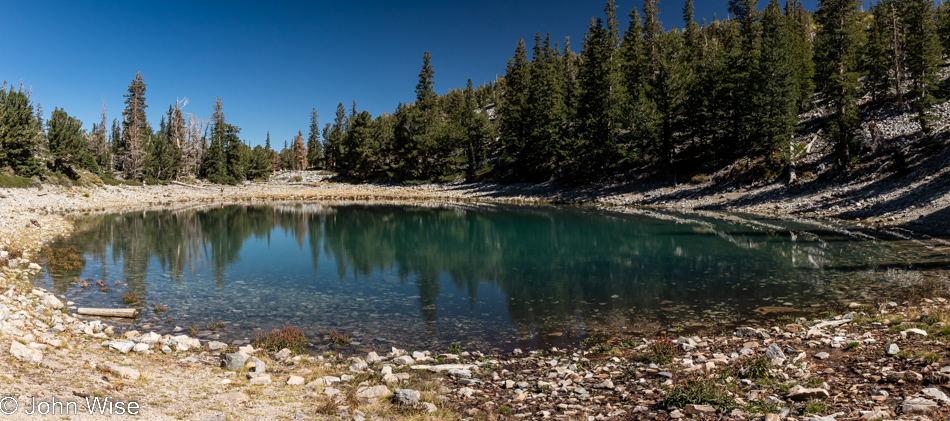
Secondary destination number two is Teresa Lake.
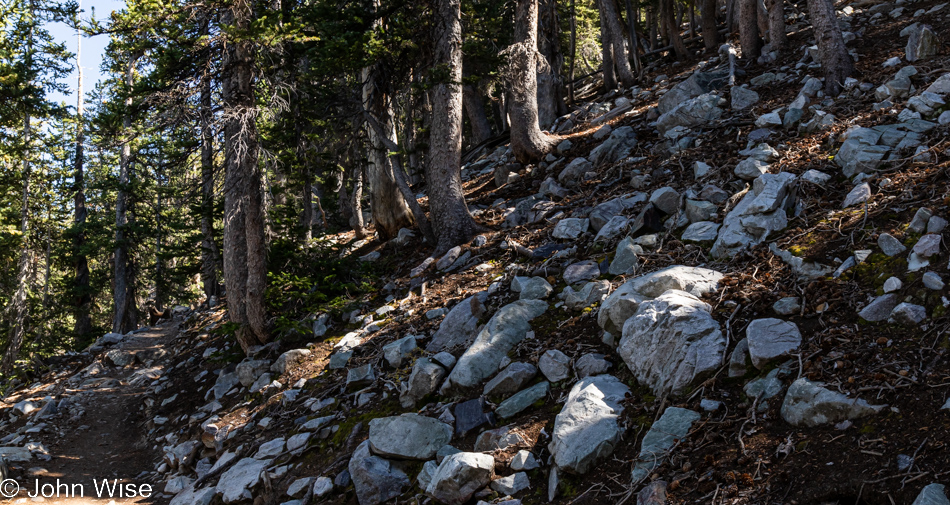
Our path from the Alpine Lakes Trail Loop has intersected the Bristlecone Pine Glacier Trail and our memories of the place from 19 years ago find nothing of familiarity. The weather might have been poor back on that earlier visit, but it wouldn’t have been so bad that our vision was obscured just 20 feet in front of us.
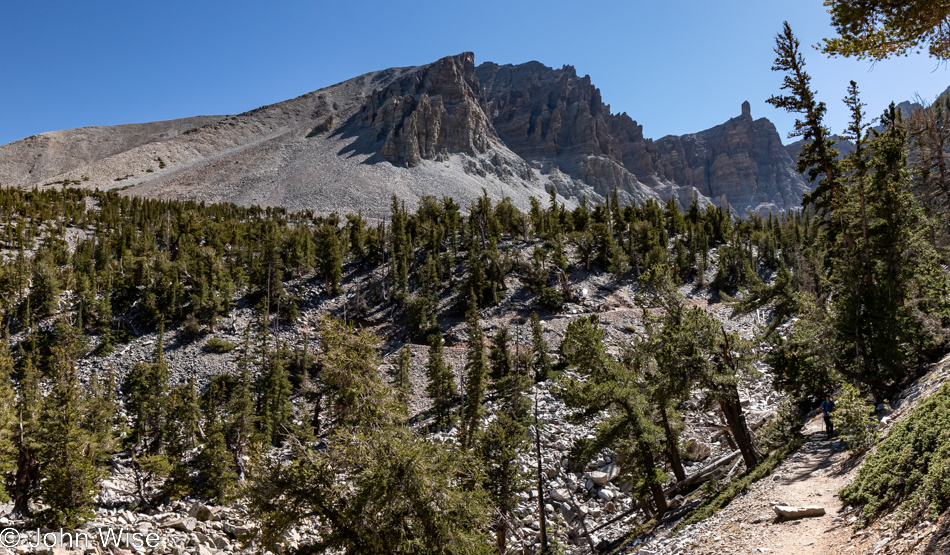
Right in front of us, off to the right, a bit near the center of this image, is the first primary reason for our visit.
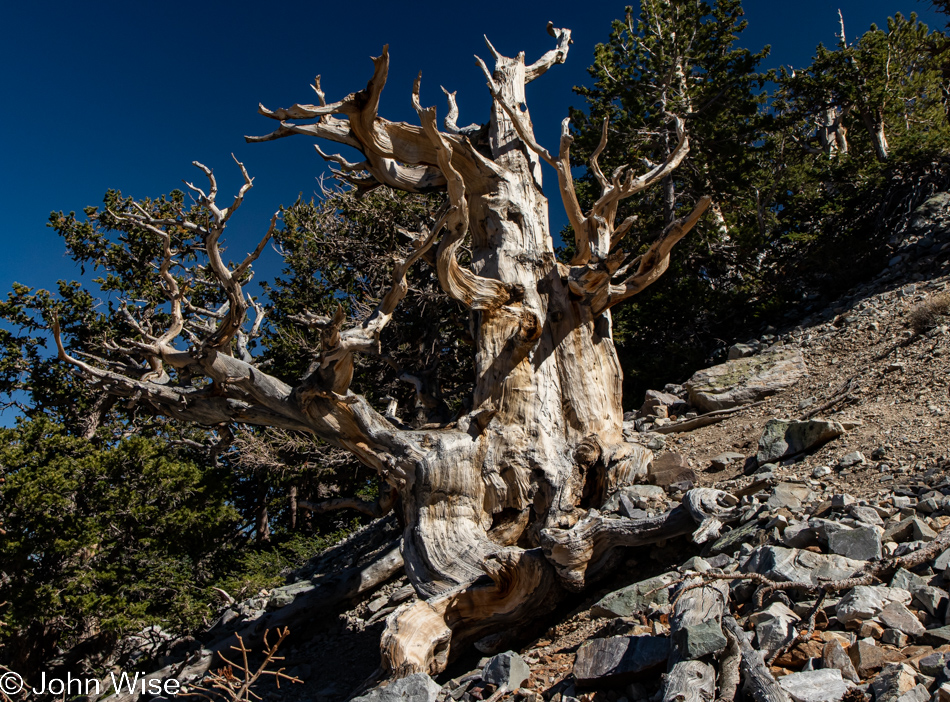
It is this right here, a gnarly example of an ancient bristlecone pine tree. These masters of longevity are considered the oldest living things on earth, and sadly, just minutes before we arrived and from the distance, we saw a group of about eight college-age young adults sitting upon and in this old tree. I think it was in Luke 23:34: where Jesus said, “Fuck ’em, for they do not know what they are doing, best smite them from their perch.”
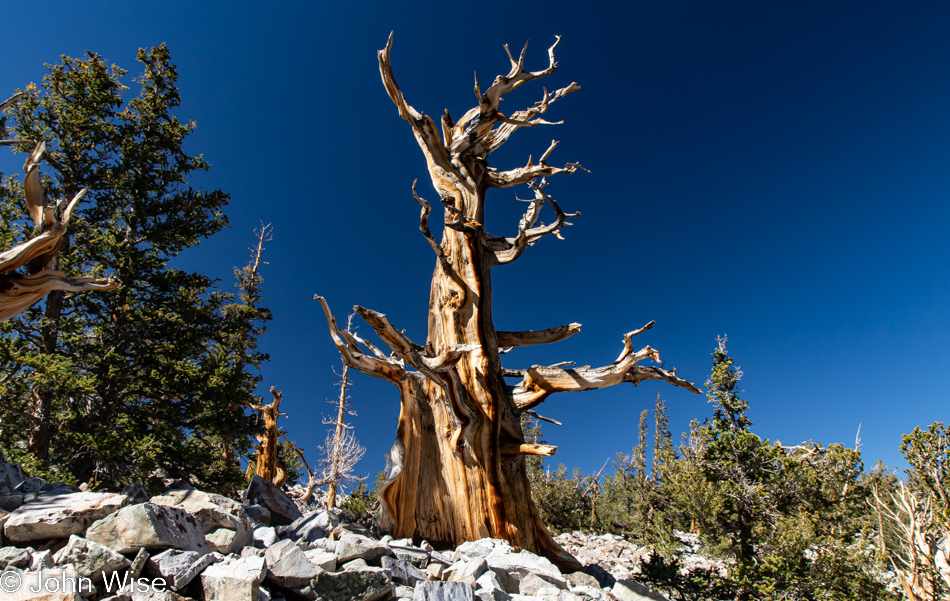
These sentinels have stood strong on this earth, in some cases for as long as 5,000 years, give or take a few, and only with the arrival of man are they at risk of joining the ranks of those things we are able to extinct. Since the primitive days when people made their earliest attempts at writing, bristlecone pines have survived in some of the harshest conditions where little else succeeds.
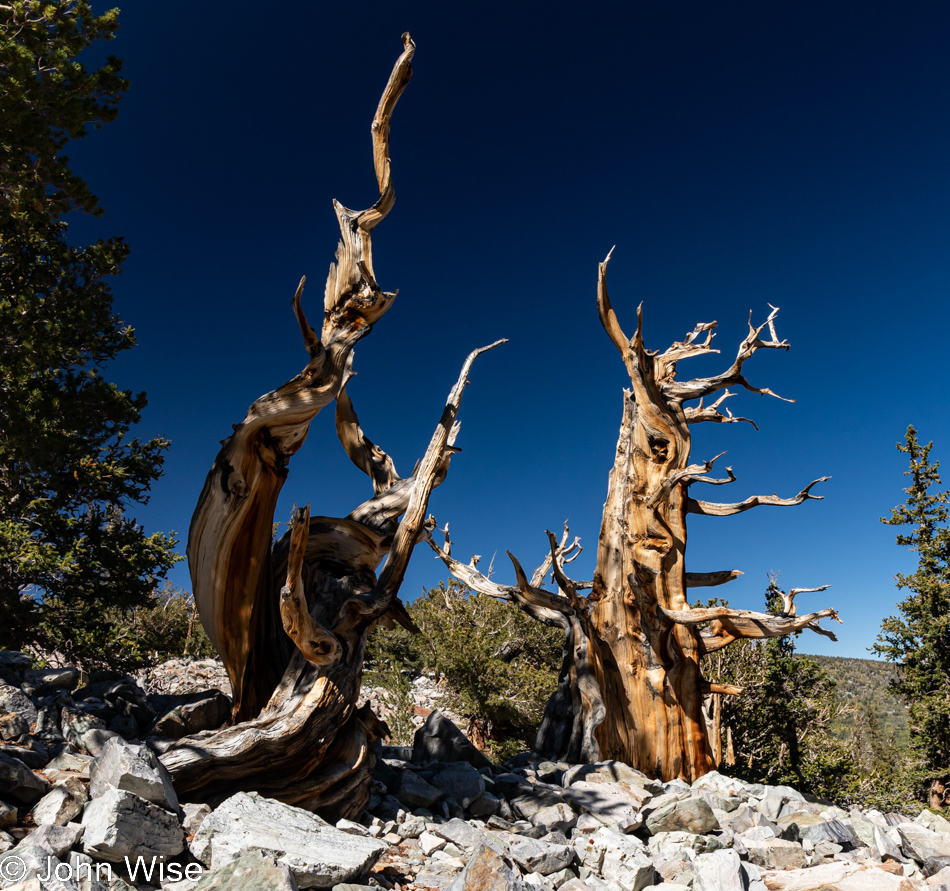
Directly upon talus slopes, these trees take hold, and against subsequent encounters with errant rocks that arrive at their feet from above, they hold fast. They’ve survived countless fires, droughts, deep freezes, and even mindless kids crawling upon their arms and roots. The old bristlecones even contributed to our understanding of ancient early North American cultures when a beam at the Mesa Verde Cliff Dwelling site was dated as having the exact same carbon-14 isotope as some nearby bristlecone pines, allowing researchers to more accurately date when the people of that area built their homes.
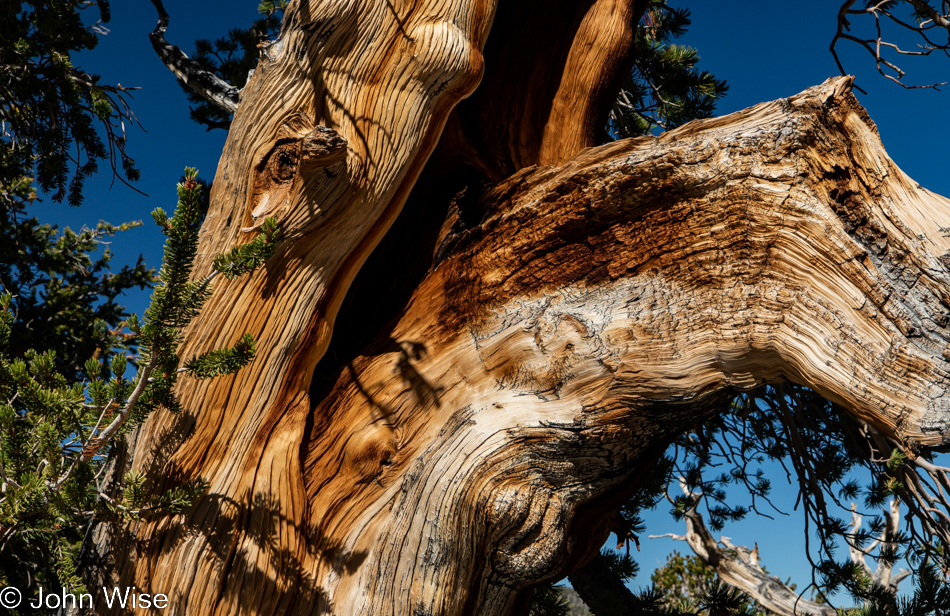
What is it within some of us who find greater meaning, depth, and hope for potential in the objects nature has cultivated than in the empty promises of those who swear inspiration from the words found in books such as the bible or those who claim a desire to do right by humanity in the political actions they perform on our behalf? While I appreciate the advances our species has made that brought Caroline and myself to this point in our own lives, allowing us to travel effortlessly to these destinations to record our impressions and experiences, I can’t help but remain aghast at the educational neglect of a majority of those we call mothers, fathers, brothers, and sisters.
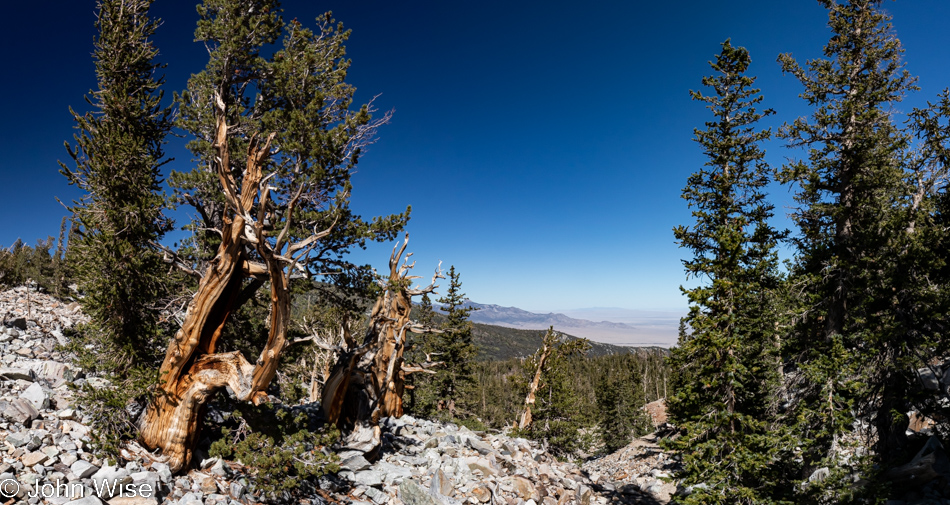
These encounters with such grand beauty and profound examples of nature strike at me and have me wondering why there are not more Aldo Leopold’s among us. For those who may not know of him, Aldo Leopold, aside from having written A Sand County Almanac, was a co-founder of The Wilderness Society, which aims to vigilantly protect 112 million acres of America’s wildlands. As much great work as groups such as The Wilderness Society, Friends of the Earth, and the Sierra Club perform, they cannot also educate the blunt stupidity out of a careless society that, by and large, has little concern about protecting these incredible places. I get it; these lands are remote and rarely seen by the masses, but they are the most precious locations remaining that we haven’t fully despoiled.

Writing of the impressions we experienced while among the trees in the mountains of the Great Basin did not happen in situ as we were in the flow of constant movement. I’m back home now, looking at the photos and trying to tap into what I felt that led me to capture the images I did. The effort to draw an intrinsic linguistic gem of inspiration out of my head that might convey the magnitude of delight found when being present in such places requires me to block out my current surroundings and try to reconnect with the moments I was on the trail. In brief spurts, I might find that place, and the words come quickly while at other times, I can stare at an image, lost in the tragic dichotomy of where I’m currently at, typically a busy coffee shop, and feel crushed under the weight of those around me and their stupendously vapid existence.
With the trees, rocks, rivers, sky, sea, stars, animals, and the rest of nature excluding humankind, I can observe their qualities and appreciate their beauty and place within the system of life as far as I can understand it, but with people, I must bear witness to their preoccupation with the nonsense that arises from egos that never graduated beyond that of children. With their pretense of being self-important, I recoil and wish to be in the presence of the natural world, but that is not a luxury easily afforded in the current world order. So we look for balance, and that might be easier found for me if only I were to stop delivering these missives that reflect on the times when life is perfect.
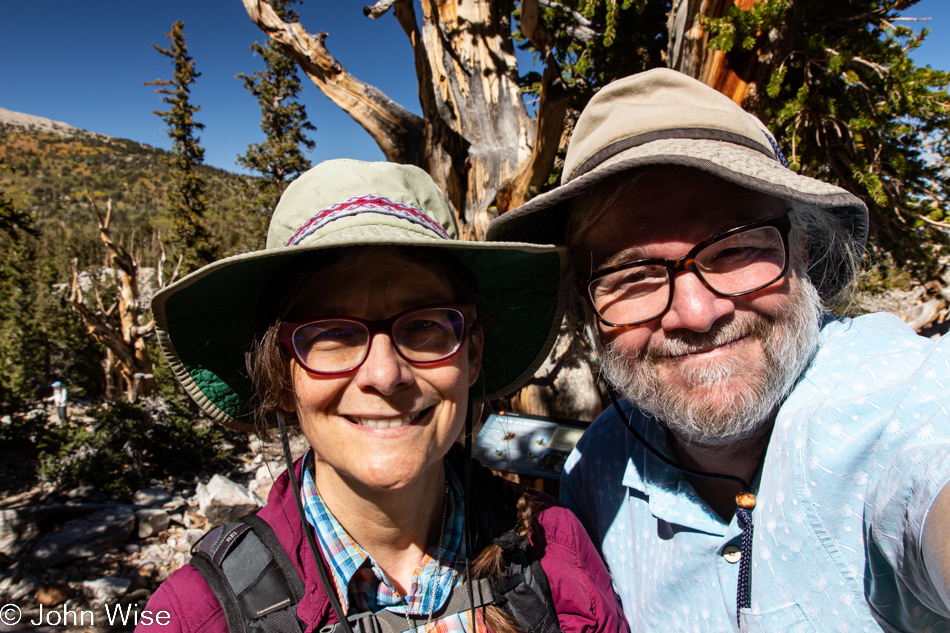
This is where life is perfect. When I turn away from looking at this smiling face of Caroline or my gaze must move on from admiring the pattern found in the seemingly sculpted surface of a tree, my eyes and mind will likely encounter something else of enchanting value, bringing yet more smile to my face that will have me searching for Caroline’s eyes to see if she too has found more awe.
When writing these posts, there comes a moment when I have to walk away from the task at hand to contend with other life obligations (yes, my writing is a life obligation); it is then that I return to joining the stream of being back in real life that I have to escape my self-imposed tunnel vision and get my senses about me as I’m once again swimming against the flow.
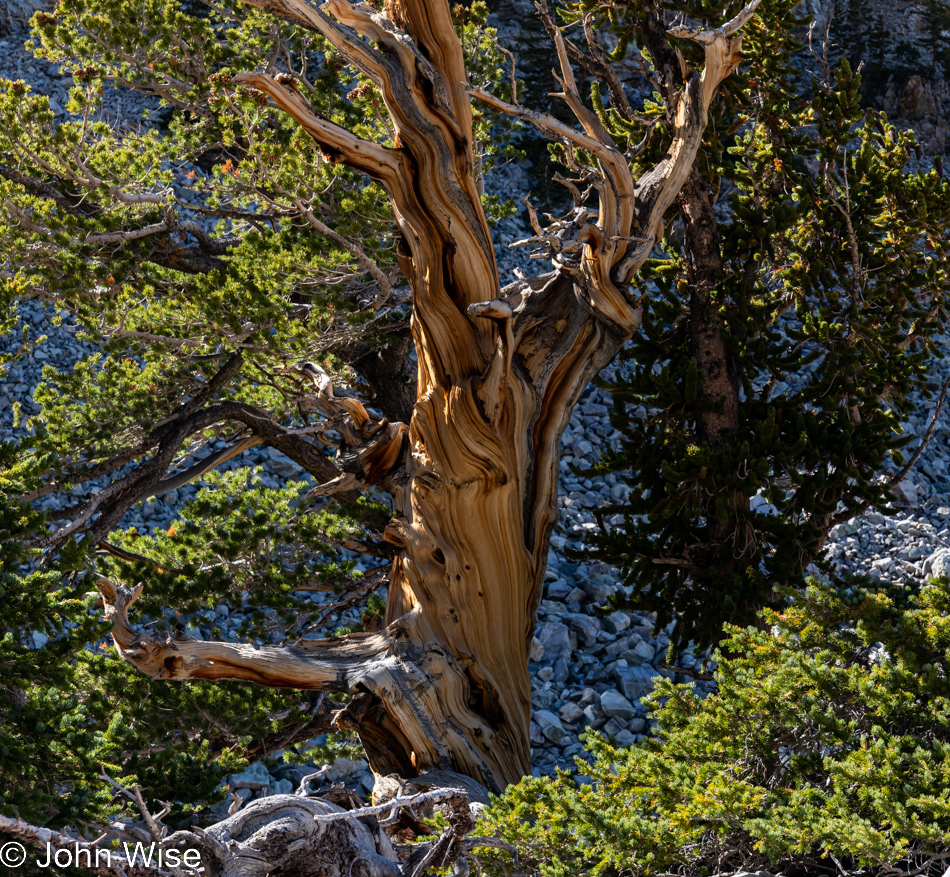
Just be. Be like a tree, a stone, or moss, and be here doing the thing that seems to be your purpose. Obviously, many will believe they are doing just that while decorating themselves with the funerary accouterments drawn out of popular consumerist culture instead of rising to the challenge of answering their own list of oblique strategies that might help groom them into finding their humanity as opposed to being tools. There is also the way of the psychedelic where psilocybin, DMT, or maybe under the right circumstances, LSD might open a pathway, but this track of the story needs to happen somewhere else.
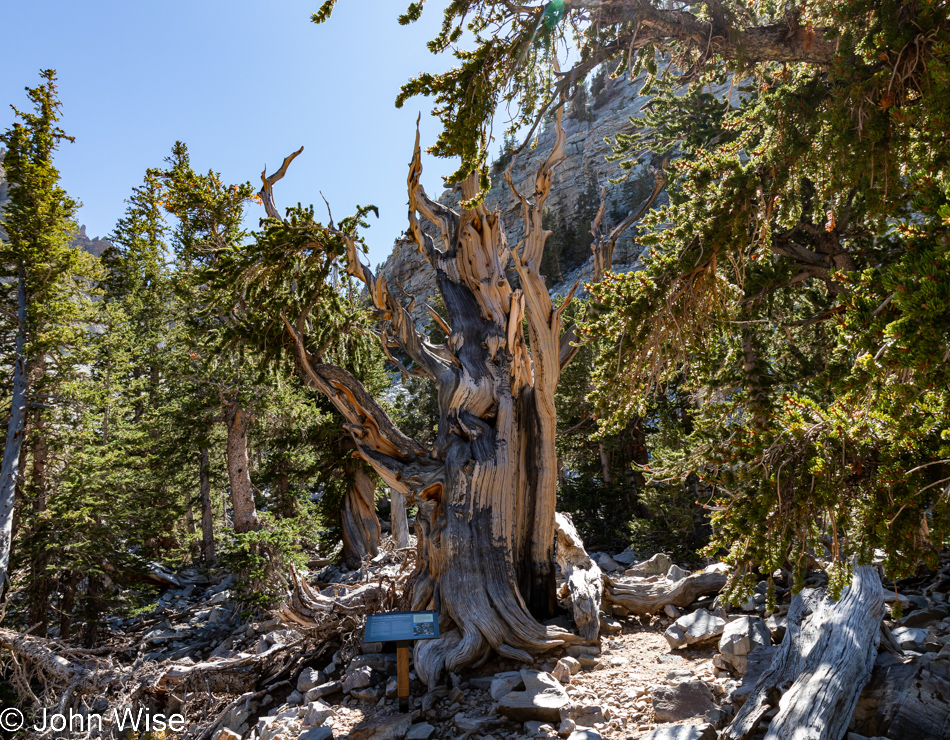
Come to think about it; this is the embodiment of the psychedelic as the environment threads its way multi-dimensionally into the earth and out to the sky. Everything here reaches into our eyes, sense of smell, and hearing. We touch cold stone and reach out to ancient life but remain blind to the universe of transactions where root hair cells are absorbing water and nutrients through osmosis while sunlight falls upon leaves where photosynthesis is at work, and all the while, the force of air and water are carving the environment in speeds we’ll never really see unfold. All of this flow of life is what the psychedelic wants to show you, but if you are too fixed in your certainties of how life must be, you’ll never see things for what they are.
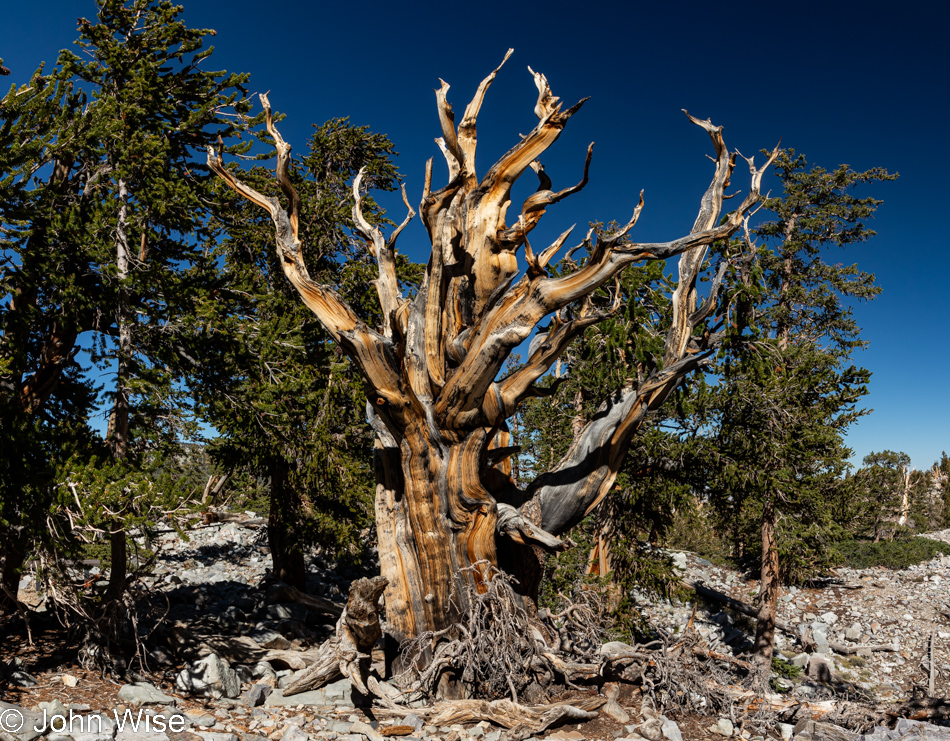
If the tree could share a story with you, it might go something like, “I’ve stood here for thousands of years; I’ve watched the heavens above shift with the sands of time. I know fire, ice, and pests. I’m more familiar with our nearby star you’ve named the Sun than any of you can ever hope to comprehend. My existence is not eternal, but I’ve grown to understand the symbiotic relationship between the earth I’m anchored to and the sky I reach for. What will you know after your brief time on this planet we share?”

Dead but not gone as its old roots hold fast, and its arms still welcome the warmth of the sun.
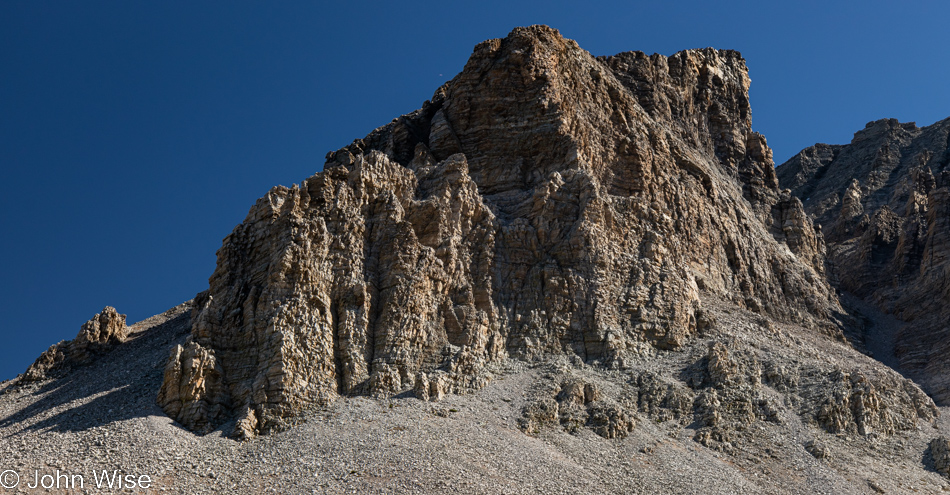
Meanwhile, the rocks of the mountain laugh at the folly of my admiring silly trees that know nothing of longevity. Mountains, they say, truly understand the providence of deep time and would sooner turn to dust over a couple of billion years than sprout and wither in a mere 5,000 years or so.
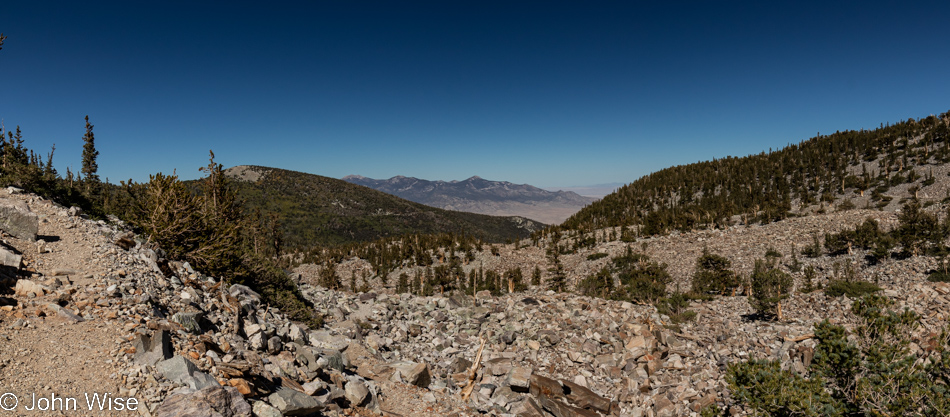
The tree retorts, “Under the best of circumstances, you send your grains of sand downriver, where they are forever lost when they join other sediments to create the basis for mountains that will one day replace you while we deliver offshoots and seeds that are taken far and wide to cover the lands you once had total dominion over. But don’t be sad as it is from your greatness towering over these lands that the rocks you drop and sediments you lend yourself to is what sustains our lives and has created the basis for the symbiosis we’ve come to enjoy.” The wisdom of nature is commanded by the silence of evolution that conveys an intrinsic beauty pulling those who understand the equation into the desire of wanting to share in this great knowledge.
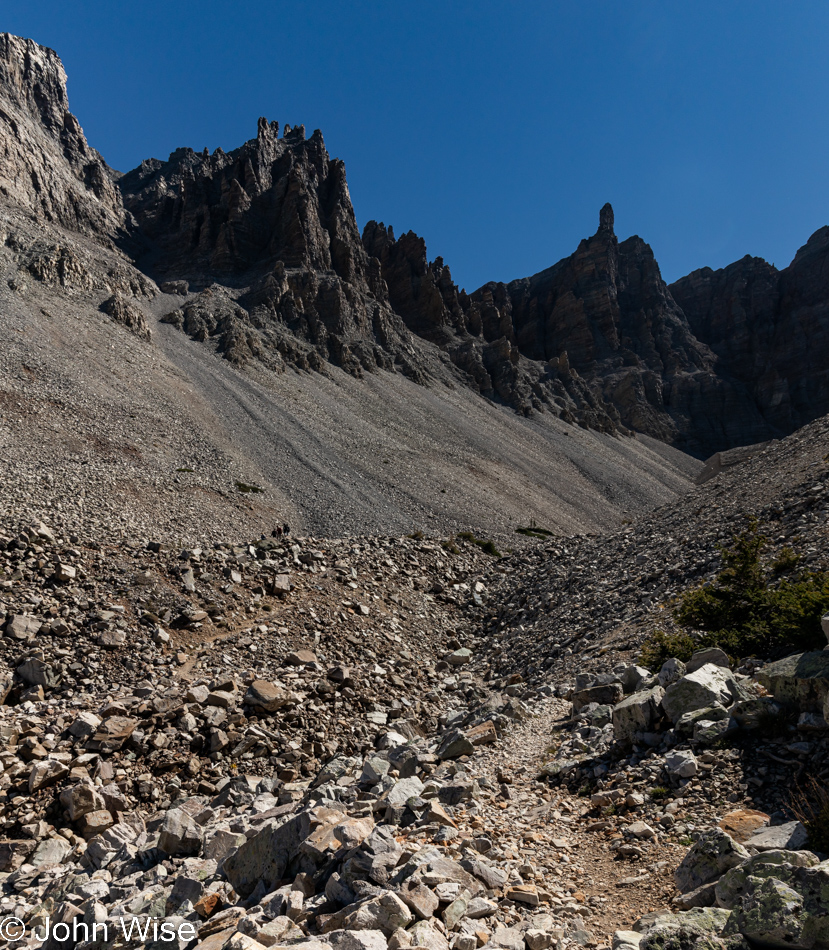
And then my developing blog post reminds me how it’s like this rocky trail into the thin air found up here over 11,000 feet above the sea or 3,350 meters up high. You see, the path isn’t always clear before you move further along, and it slowly becomes evident. I’m not saying that my writing will do the same thing, though that’s what I aim for. Each step forward risks twisting an ankle and each successive word threatens my ego with exposure of not having really understood the way into writing. No matter, maybe writing is like hiking; you go along on a path uncertain of what you’ll really find, but on occasion, you stumble into something that brings you joy, while at other times, you stand at the precipice of horror, wondering if you should go on. The air thins, and dizziness swirl about in your head. Stop, take a few deep breaths, and continue on your way.
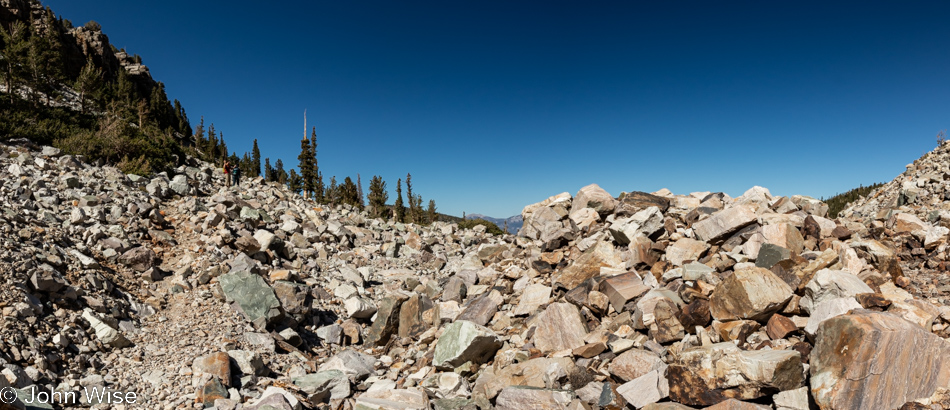
Perhaps the way ahead is frightening? That’s okay. Stop again and turn around. Look at where you’ve come from, and maybe you’ll see that you’ve already surmounted hurdles that make continuing easier than you feared. The adventure is, after all, just a series of steps forward, one foot after the other and, in my case, also one word after the other. An outcome one should seriously fear is when debilitating inertia stops one from ever taking the first step or the next one, and we become frozen in place, be that in front of a TV, a job, a relationship, on the trail, or in mid-sentence.
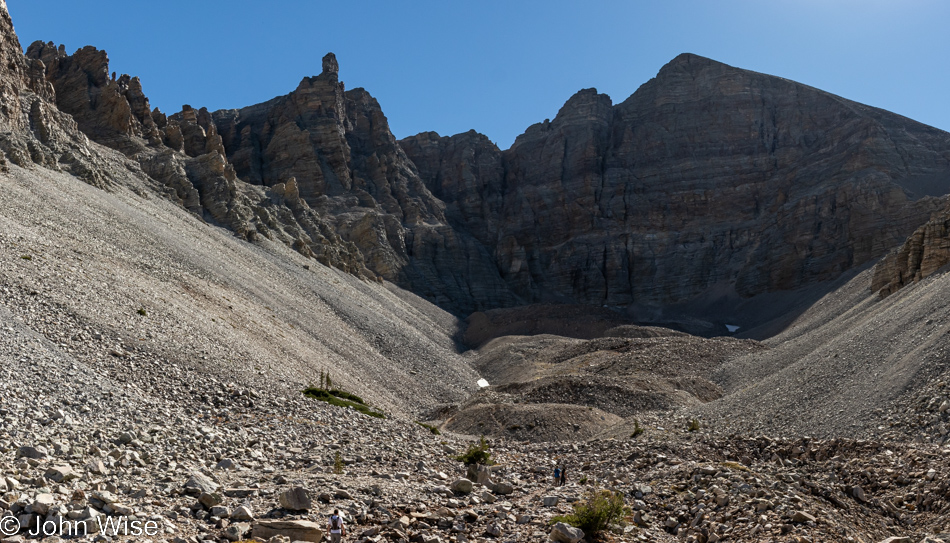
We were informed that even if we’d stop at the sign that begins the last leg of the hike from the Bristlecone Pine Trail out to the glacier, we’d be offered about as good a look that’s possible without some scrambling over a bunch of scree. Do you see that patch of snow in the center of the photo? That’s what remains of the glacier. I thought this was good enough as it had taken us nearly 4 hours to get out here; we’d soon be in shadows, and we still needed to return to our car before the sun went down. Caroline wanted a closer look, so we continued. The top of the mountain on the right is Wheeler Peak.

At the bottom left of this image, you’ll see a trail leading up and around the foreground debris. It was at the foot of that trail that I didn’t want to go further as it was starting to challenge my sense of exposure. Caroline went up there, but from her perspective, she couldn’t see anything better. Now, the bad news for my wife. That small bit of glacier is the Rock Glacier, while what we thought was some remnant of snow from the past season turns out to have been the bottom of the Wheeler Peak Glacier. If you look at the photo above this one, at the bottom of the cirque, you can see a slightly bluish area going up to the left from the small snow patch. That was the main part of the glacier that we hiked out here for, and we totally neglected looking specifically at that. We didn’t even notice it as being glacial. As for cirque, it is defined as “a half-open steep-sided hollow at the head of a valley or on a mountainside, formed by glacial erosion.”
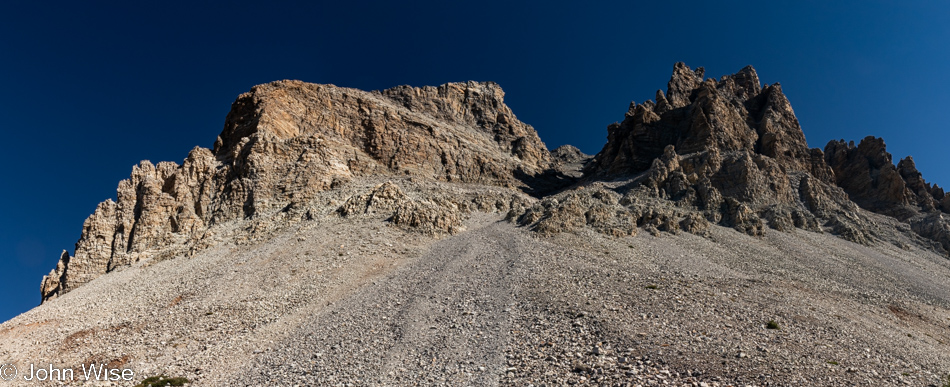
While I might be mistaken, keep in mind I’m not a geologist; I think this is part of the cirque as it looks like on the back of Doso Doyabi.
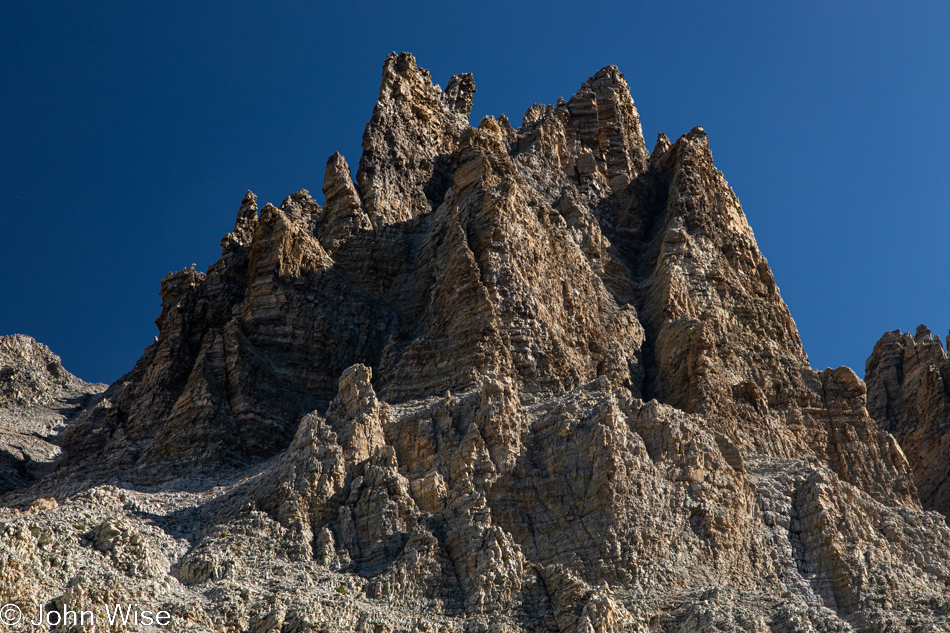
We are looking at the remnants of a 560 million-year-old sea where deposits of sand, mud, and limey sediments made of silt and clay mixed with calcium carbonate to create these highly fracturable rocks. As the glaciers retreated, they dragged along tons of these rocks.
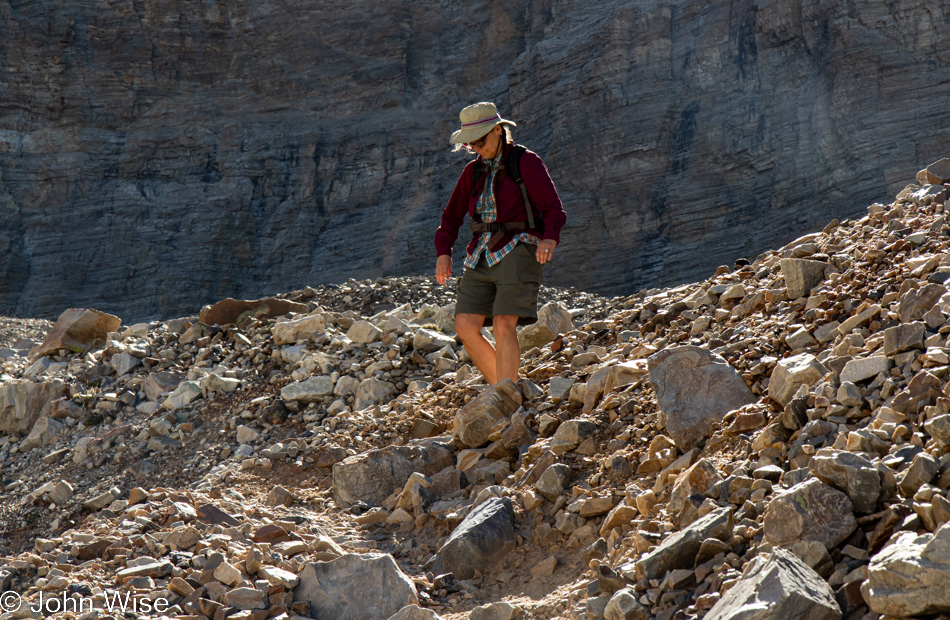
Much of our trail this afternoon has been upon that debris left by the disappearing glacier that is also called a moraine. This is Caroline descending the segment I referenced earlier, where part of the trail was too exposed for my sensibilities.
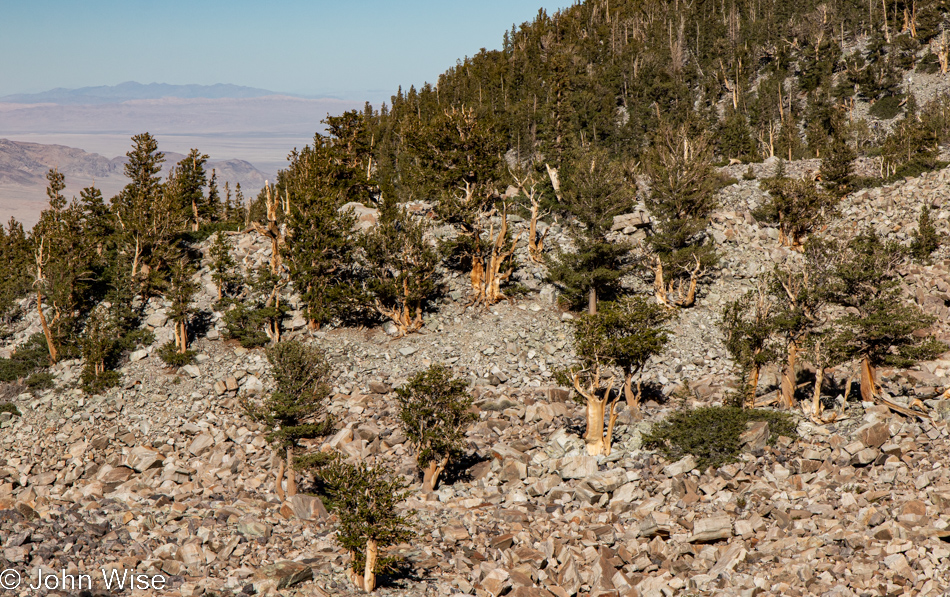
A whole forest of bristlecone pines, maybe we could call it a murder of trees? [I prefer “thunder of trees,” actually – Caroline] In the background is the Great Basin that stretches from the Sierra Nevada Range in California, such as in Death Valley, where we were in January, over to the Wasatch Range in Utah, where we spent the 4th of July. The basin, as I understand things, never drained to the ocean and instead was always an inland sea, remnants can be found at the Great Salt Lake in Utah and the nearby intermittent Sevier Lake that shows up occasionally about 40 miles east of here. Today, I learned that these types of bodies of water are referred to as endorheic, meaning they do not flow outside of themselves, just like the Salton Sea over in California.
A great article that helped me learn about some of this can be found here.

We’re on our way back down the trail with an impulse to revisit all the trees we passed on our way up, not because we failed to see them but because there’s a hope that we’ll see something more. In my reasonable mind, I know that I cannot merge with these trees, and I cannot see some deeply hidden truths within them; all the same, I want a greater exchange with the nature I’m visiting so that it might continue to travel with me when I’m no longer present.
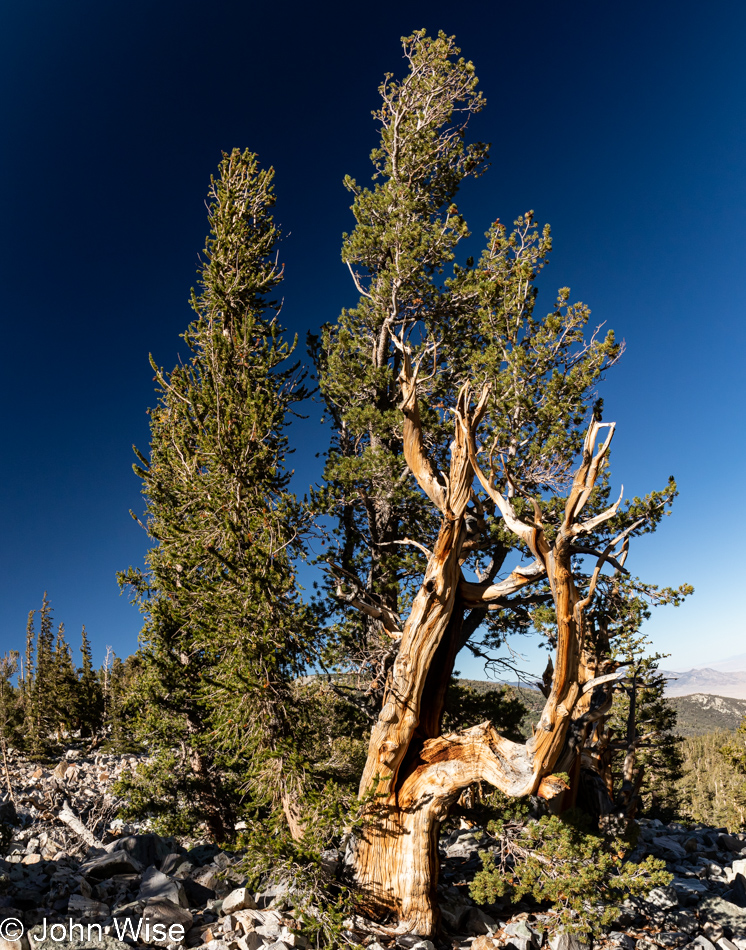
Goodbye, Bristlecone Pine. Should I never see you again, I wish you a continued existence for another 1,000 years as you outlive all 7.98 billion people alive today and the next many billions that will follow over the ensuing hundreds of years.
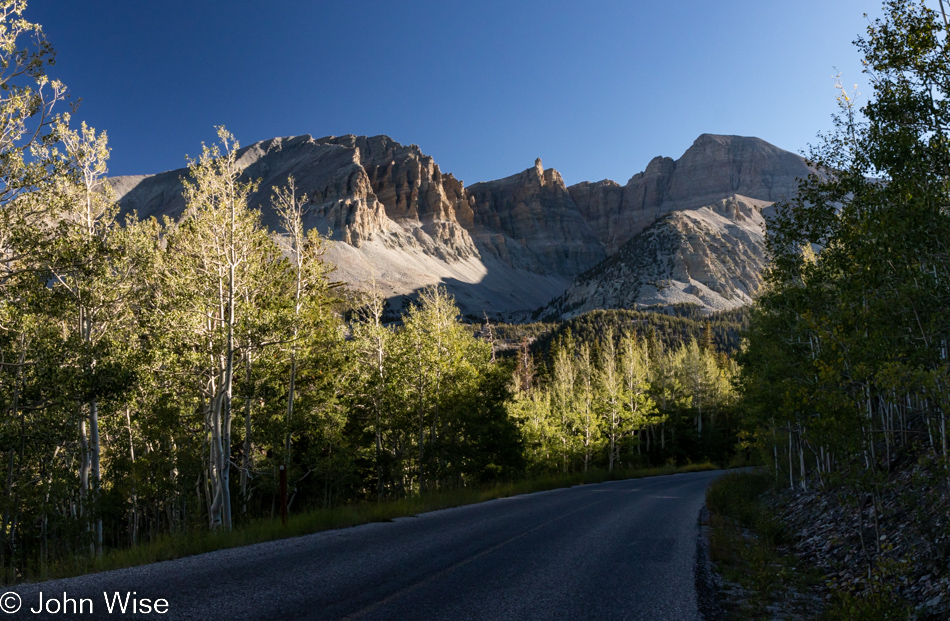
We are reaching our car again and are looking forward to sitting down. From this point, our car is just behind me on the right. The trail we hiked out on is over near it and travels away from the road to the two lakes we visited earlier; they both lay below the bright, ragged mountainside on the right of the photo. The trail then swung around the base of that part of the mountain and went right between Doso Doyabi, the peak to the left, and up towards Wheeler Peak, the high point on the right. Again, I may be mistaken, but the very top of the glacier might be seen to the right of the center of this photo. Should we ever return to the Great Basin National Park, we’ll have to be here early in the morning when the rising sun illuminates the cirque and the glacier nestled up under it.
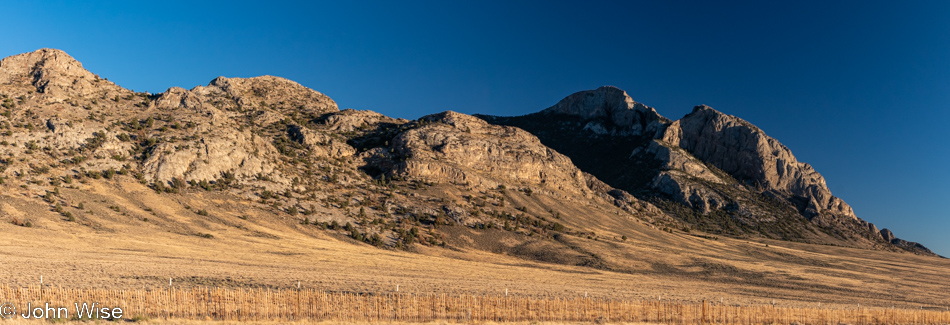
Driving down the mountain, we started considering the option of sticking around for the Astronomy Festival and so we stopped at the visitors center, but it was closed. Drats, not only wouldn’t Caroline be able to drop off her Junior Ranger booklet, but we couldn’t learn more about the evening’s events. With no phone signal out here, that wasn’t an option either, so we decided to hit the Loneliest Road in America, Highway 50, and make our way over to Ely, Nevada, to secure a room for the night. A funny thing happened on the road to Ely; we turned south on Highway 93, certain we’d find a room in that direction and better position ourselves for tomorrow’s trip home, thus skipping the Astronomy Festival. Had we had phone signal prior to reaching the 93 and could have contacted a motel in Ely, we likely would have stayed and then returned to the national park in the evening. As it was, we felt we had a great experience so far and decided that a shorter drive home tomorrow was desirable.
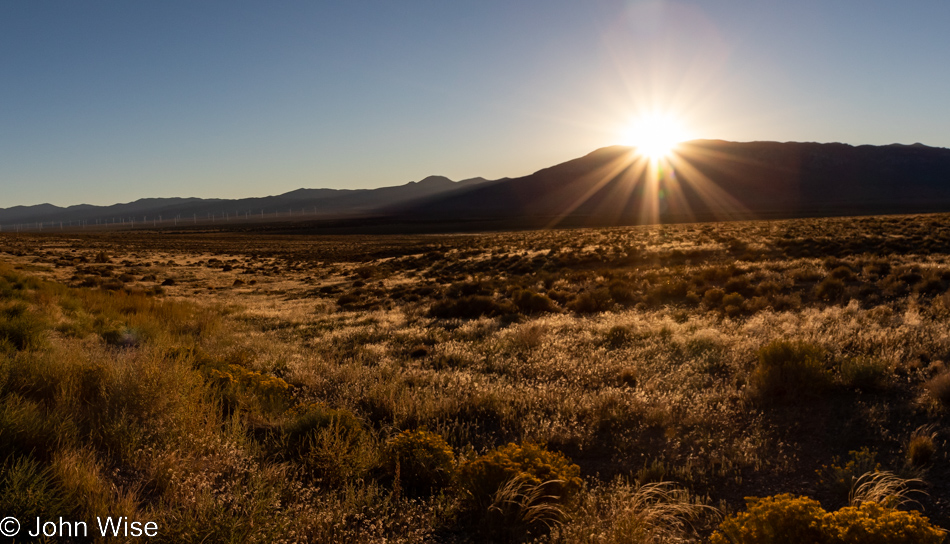
Confident and content that we’d made the right decision, we drove off into the sunset. It was right about here on the road that we felt a certain sense of familiarity that required a stop and photo to compare to a previous trip if this were, in fact, the same place we’d captured years before. Click here to compare for yourself; we’re pretty sure it’s the same spot just from a slightly different position on the road.
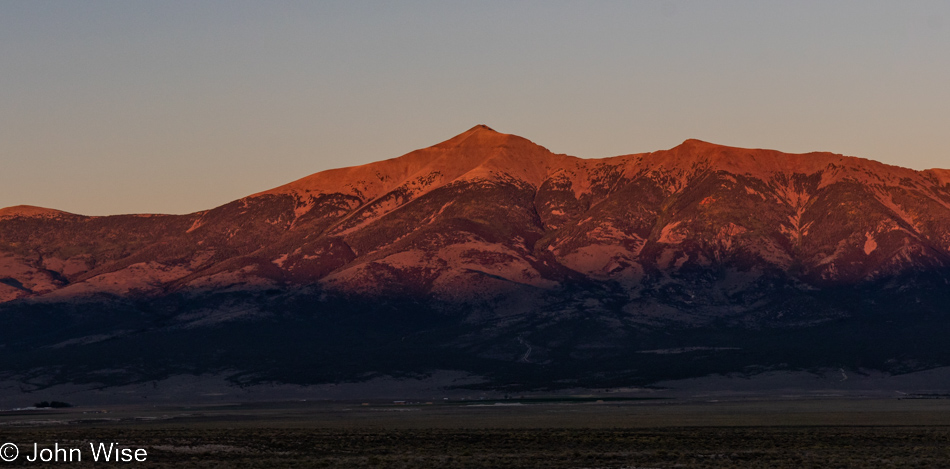
No, this is not a great photo with so much shadow on the foot of the mountain, but I’m posting this as it felt like we’d already been driving for more than 45 minutes when a sign pointed out that this is Wheeler Peak, did it really take this long to get to the other side? By the way, we still didn’t have a phone signal.
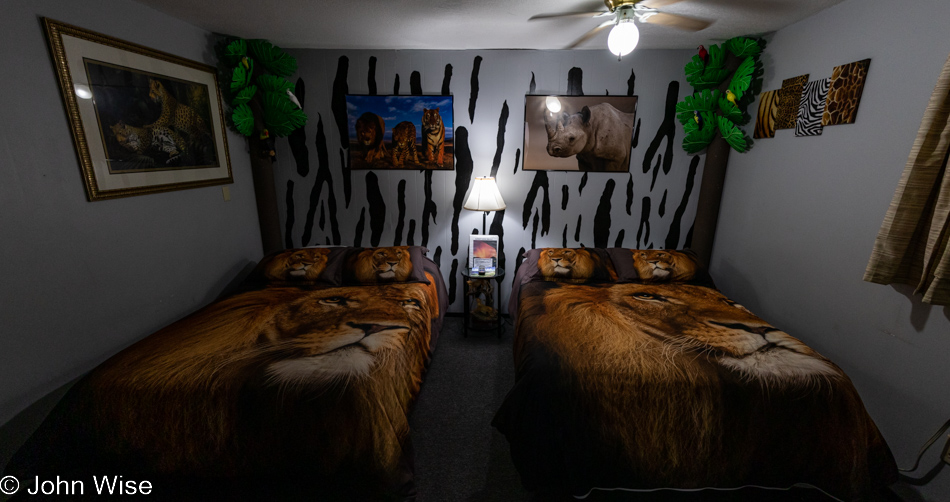
When we finally started seeing signal again, we found out that all three lodging options in Caliente were sold out, and so were the other places between us and Alamo, Nevada. I mention Alamo as that’s where we secured the last room they had, which, if they hadn’t had a room, would have meant we’d be driving all the way to Las Vegas, another 104 miles south.
We scored at the Sunset View Inn with a night in the Safari Room. Before I knew about the extra decorative touches here, Caroline texted me about her surprise regarding our room, then she slid open the window as I was still taking care of some things at the car, and with a beaming smile, she told me I had to come over and see this place immediately. As I peered in, the first thing that grabbed me was the lion-themed bedspreads. Getting into the room and seeing the animal prints on the light switches, the painted claw marks in the closet, and the elephant-themed towel holders, the character of the otherwise non-descript roadside motel started to elicit joy. Each room at this inexpensive outpost has a different theme! Hopefully, on a return visit, we’ll snag the underwater-themed room. If these kinds of touches out in the middle of absolute nowhere don’t put a smile on your face, nothing will.
